TRUFFLES
DONUTS
CAB SAUV
SOLO DINING
VENISON
GRAINS

PORK
ROSEHIPS
KOHLRABI
HALF BOTTLES
KING CLAMS
roast rack of pork with peach salsa pg. 24


















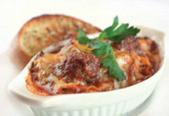


TRUFFLES
DONUTS
CAB SAUV
SOLO DINING
VENISON
GRAINS

PORK
ROSEHIPS
KOHLRABI
HALF BOTTLES
KING CLAMS
roast rack of pork with peach salsa pg. 24





















Founder and Editor in Chief Gary Hynes
Contributing Editor Carolyn Bateman
Vancouver
Contributing Editor Julie Pegg
DRINK Editor Treve Ring


Senior Wine Writer Larry Arnold Okanagan
Contributing Editor Claire Sear

Food Reporters
Tofino | Ucluelet: Jen Dart, Vancouver: Anya Levykh, Okanagan: Claire Sear, Victoria: Rebecca Baugniet | Cowichan: Lindsay Muir | Nanaimo: Kirsten Tyler
Web Reporters
Van Doren Chan, Melanie Tromp Hoover, Colin Hynes, Jeannette Montgomery, Courtney Schwegel, Morgan K. Sterns, Jay Whiteley
Contributors Larry Arnold, Joseph Blake, Michelle Bouffard, Jennifer Danter, Jen Dart, Pam Durkin, Gillie Easdon, Jeremy Ferguson, Anya Levykh, Sherri Martin, Elizabeth Smyth Monk, Michaela Morris, Simon Nattrass, Elizabeth Nyland, Julie Pegg, Treve Ring, Claire Sear, Dona Sturmanis, Adem Tepedelen, Michael Tourigny, Sylvia Weinstock, Rebecca Wellman.

Publisher Pacific Island Gourmet | EAT ® is a registered trademark.





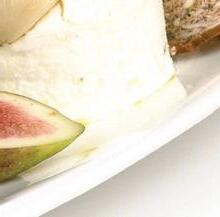
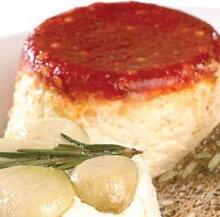

Advertising: 250.384.9042, editor@eatmagazine.ca


Mailing address: Box 5225, Victoria, BC, V8R 6N4 Tel: 250.384.9042

















Email: editor@eatmagazine.ca Website: eatmagazine.ca
Since 1998 | EAT Magazine is published six times each year. No part of this publication may be reproduced without the written consent of the publisher. Although every effort is taken to ensure accuracy, Pacific Island Gourmet Publishing cannot be held responsible for any errors or omissions that may occur. All opinions expressed in the articles are those of the writers and not necessarily those of the publisher. Pacific Island Gourmet reserves the right to refuse any advertisement. All rights reserved.
Cover photography: “Tray Chic”by Michael Tourigny
Facebook/EatMagazine
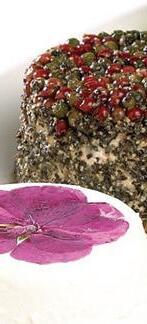

EAT is delivered to over 300 pick-up locations in BC including Victoria, Vancouver, Vancouver Island and the Okanagan
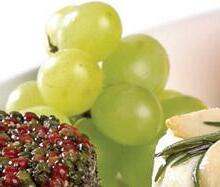
twitter.com/EatMagazine


To all of you who filled out our 2013 Readers’ Survey, thank-you. After fifteen wonderful years of publishing this magazine, I wanted to know you, the reader, better and wanted to find out more of your interests, food and wine choices, and a bit about your lifestyle. We asked how many times you eat out, take culinary trips, cook at home, and shop at local stores. And it’s clear EAT readers are a hungry bunch. A whopping 99.5% eat out in locally owned restaurants with 72.9% of you dining out regularly and often; 95.6% of EAT readers support our butchers, specialty grocers, bakeries, wine shops, and delis. Of those, 76.1% state they shop at EAT advertiser’s stores or buy advertiser’s products and goods more than once a month. Thank-you. It’s great for local businesses, ensuring a broad range of food and wine choices, and, as well, advertiser support is how we keep the magazine going.
When asked about your interests, you told us cooking (90.3%) and eating out (87.9%) are your favorite activities. Wine and beer, healthy eating, buying kitchen tools, and culinary travel are close behind along with music and design. Many comments were shared and I love how readers took the time to tell us they read
now open for lunch.
11:30-2:30, Tuesday through Saturday.
ev ery issue from cover to cover. In your words:
“I don’t like to miss a single page.”
“What can I say? I devour EAT from cover to cover.”
“It’s my go-to resource for anything foodie in BC.”
We also asked what you’d like to see in the magazine and how EAT can improve. We’ve taken all your suggestions to heart and will work on implementing them in the months ahead.
As editor, I’m very pleased to have heard from you and to know we have such a devoted and engaged readership. In the future, EAT will continue to tell the stories that matter the most to you.
Everyone who filled out the readers’ survey was entered into the draw to win a trip to Vancouver sponsored by The Listel Hotel and West Restaurant. I’m pleased to announce the prizewinner. Congratulations to Caitlin Hedley of North Saanich. We know you’ll have a great time and will be eating well on your trip!
—Gary Hynes, EditorAt 45 Bastion Square
Camille`s @ 45 Bastion Square Victoria, BC

V8W 1J1
www.camillesrestaurant.com
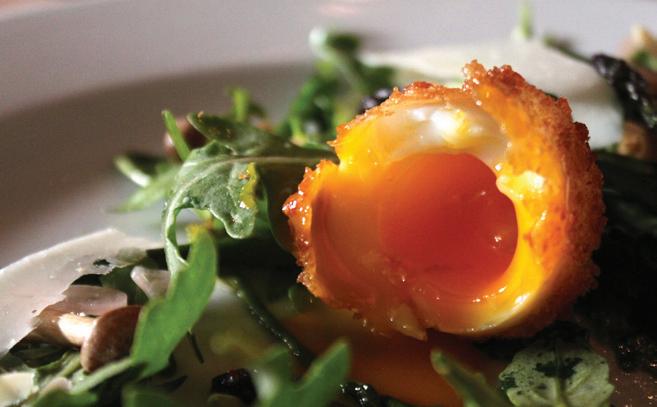
HAND-CRAFTED BREAD MADE WITH FRESHLY STONE-MILLED FLOUR AND ONLY CERTIFIED ORGANIC OR SUSTAINABLY GROWN LOCAL INGREDIENTS . NATURALLY LEAVENED AND BAKED TO CRUSTY PERFECTION IN WOOD-FIRED BRICK OVENS.

100% ORGANIC | FAIRTRADE | LOCALLY OWNED & OPERATED
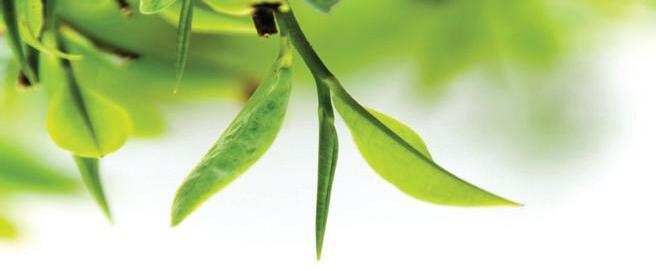
Silk Road Teas are created and blended in Victoria using fresh, organic botanicals. Exceptional freshness, combined with organic growing practices, results in higher antioxidant levels and superior flavour in your cup.
What’s just as important as the premium quality ingredients we select for our teas, are the ingredients we never use - no artificial flavours or colours - just pure, healthy, deliciousness in every sip.
For recipes, contests & tea fun join us on facebook.
The Moss St Market ‘Chef’s Stage’ has an impressive line-up for the months of September and October. Sep 7: Chef Heidi Fink, Chef Heidi Fink Cooking Classes (morning) and Steve Walker-Duncan, TV Host – Flavours of the West Coast (afternoon). Sep 14: Laura Moore, Good For You Gourmet (morning), Trevor Fotheringham, Oregano’s (afternoon). Sep 28: Kim Cummins, Camosun Farm Box. Oct 5: Brad Holmes, Ulla. Oct 12: David Mincey, Preservation Foods. For more information, visit the website. (mossstreetmarket.com)
The Great Canadian Beer Festival has become one of the world’s must-attend beer events. People from all over the globe seek out Victoria and the GCBF every year; the ev ent attracts brewers from Australia, volunteers from England, and beer lovers from all over. In support of C-Fax Santa's Anonymous, the GCBF will be held Sept 6 – 7. (gcbf.com)
Cowichan’s Annual Wine and Culinary Festival is a weeklong celebration, running Sept 715, of what this beautiful region has to offer. The festival is presented by volunteers from local wineries and food establishments as well as sponsors who recognize the importance of supporting the region upon where they live. Explore the breathtaking landscape as the winding country roads take you on a journey to discover award-winning wines, ciders, spirits and food. The Festival takes you to the cellar doors and to the farms where the food and drink are created. (wines.cowichan.net)
This event will invite all members of the general public to experience the new Victoria Public Market at the Hudson, Sep 14-15. The day will be filled with local food, fun, entertainment, and exciting surprises. The event begins with VIP speeches at 10am on Sept 14, on an outdoor, covered stage in the Carriageway, followed by a ribbon cutting at 11am. There will be a farmers’ market and local music in the carriageway from 11-3pm, and cooking demonstrations and musicians inside the Market from 11-6pm. Kids entertainment will include free face-painting (11-2pm) and balloon twisting (12-2pm), and food and gardenfocused activities by Lifecycles and Compost Ed Centre. (victoriapublicmarket.com)
This year Metro Vancouver’s Feast of Fields is taking place at Krause Berry Farms and Estate Winery on Sept. 8. Vancouver Island’s Feast of Fields will be held at Metchosin Farm, Sept. 22. The event highlights the connections between producer and chef, field and table, and farm folks and city folks. This is a gastronomic journey towards a sustainable, local food system. $95 (must be 19+) Buy tickets online at feastoffields.com


The 6th Annual Chef Survival Challenge will take place at Madrona Farm on Sunday, Sept 8, from noon to 6pm. Tickets are $40 per person/ $100 per family, and are now available on the website and at the Madrona Farm Vegetable Stand, 4217 Blenkinsop Road. Cheer on the region's finest chefs as they compete to find the best ingredients on the farm, then bid on the meals they create. This year, to add to the fun, 10 Saanich Firemen, will be accompanying the chefs in the obstacle race and one firemen elected by his colleagues as 'best chef', will cook. Prizes and gift certificates from participating restaurants will be given away as well! (chefsurvivalchallenge.com)
3RD ANNUAL JAMES BARBER FUNDRAISER (DUNCAN)
Cowic han Chefs Table and invited BC chefs are hosting this culinary showcase in honour of the late James Barber, Canada’s Urban Peasant. This year’s James Barber Fundraiser will take place Sept. 15 and has the theme of savoury, spicy and sweet dishes made with local apples. This fundraiser for Providence Farm will feature stations throughout the historic buildings offering culinary delicacies paired with local beer, wine and cider. (providence.bc.ca/more/james-barber-fundraiser)
Dine at the top of the local food chain.









Stage Wine Bar is proud to introduce our new 5-course tasting menu with wine pairings. You can now enjoy all that Stage has to offer for only $69.95 per person (plus tax). It is the perfect experience if you have a special occasion, staff function, or want to impress your clients. Everything is taken care of in advance so all you need to do is arrive and enjoy an amazing dinner in our beautiful room with expert service.
3rd ANNUAL CORK AND KEG FESTIVAL (FRASER VALLEY)
The third edition of this event is a showcase of international and local wines, craft and premium beer as well as local cheesemakers and chocolatiers. The consumer event runs from 7:00 pm to 10:00 pm and ticket registration is available online. The Cork & Keg Festival will host 600 attendees from the Fraser Valley area and showcasing 55 wine and beer purveyors sampling over 300 products. Sept. 20 (corkandkeg.ca)
SIP AND SAVOUR SALT SPRING (SALT SPRING ISLAND)
The 3rd annual edition of this festival shines the spotlight on the natural abundance of Salt Spring Island. On Sept 27 and 28, Sip & Savour Salt Spring unites growers, food producers, chefs and vintners from Salt Spring Island and the Vancouver Island region with local and BC vintners in mélanges a trois of culinary magic. (sipandsavoursaltspring.com)
2013 APPLE FESTIVAL (SALT SPRING)

After cancelling the Apple Festival in 2012, due to a weather related crop failure, the Salt Spring Apple Festival is back. This is your chance to visit Apple Heaven while still on earth! Become a Salt Spring Island Apple Connoisseur for a day. Where else do you have over 350 different apple varieties being grown organically? Salt Spring's apple history dates back to 1860. Sept 29, 9am – 5pm. (saltspringapplefestival.com)
FRASER VALLEY FOOD SHOW (ABBOTSFORD)
The Fraser Valley Food Show will be held Oct 4-6 at the TRADEX Fraser Valley Trade & Exhibition Centre in Abbotsford, BC. Experience food both local and international, celebrity chef demonstrations, cooking competitions, sausage making competitions, cheese and wine seminars, Bite of the Valley participating restaurants and the Grapes and Hops wine/beer/spirits tasting pavilion. (fraservalleyfoodshow.com)
BC WINE AWARDS RECEPTION & TASTING (FRASER VALLEY)
Kicking off the 2013 Fall Okanagan Wine Festival is the announcement of the award winning wines from our 2013 Fall Judging Competition on Oct 3. As wines from over 100 British Columbia wineries are recognized, guests will sit at winery-hosted tables to create an intimate and social setting. Reception to include fabulous tapas and canapés from Okanagan Street Food. This is a get home safe event sponsored by BC Liquor Stores and Valley First Insurance. (thewinefestivals.com)
THE 21st ANNUAL BITE OF NANAIMO (NANAIMO)
Oct. 18 from 4pm- 9pm at the Beban Park Auditorium. The 21st Annual Bite of Nan aimo is a tasty fundraiser for TheatreOne. Tickets available now. (theatreone.org).
ART OF THE COCKTAIL (VICTORIA)
The Art of the Cocktail is a special weekend-long event fundraiser for the Victoria Film Festival. The Grand Cocktail Tasting returns and public tastings and special events will be held from Oct 26-28. (artofthecocktail.ca).
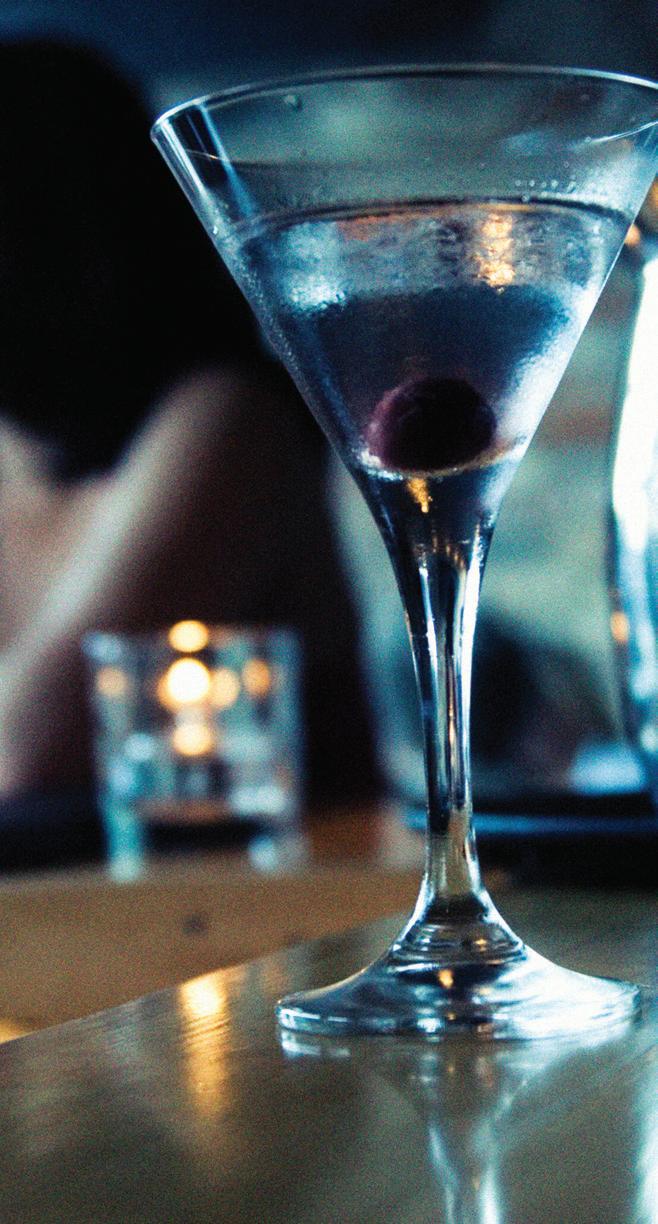
ANNUAL HARVEST GRAPE STOMP & OYSTER FEST (SALT SPRING)
Saturday Oct 19 12-5pm. An afternoon of local music,food,oyster shucking, grape stomping,competitions and fun at Salt Spring Vineyards. $2 donation to a local charity at the door. (saltspringvineyards.com)
COMING UP: GOLD MEDAL PLATES (VICTORIA)
Victoria is proud to officially announce the arrival of Gold Medal Plates to the capital city. Vancouver previously hosted the coveted event, but this year in a stunning coup, Victoria won the rights for the next three years. The event will be held this year on Nov 7 at the Victoria Conference Centre. This celebration of Canadian Excellence in food, wine, entertainment and athletics is held in 11 Canadian cities and has raised over $7.4 million to date for Canada's Olympic athletes. Tickets are available now. (goldmedalplates.com)
CORNUCOPIA (WHISTLER)













Whistler's annua l wine and food extravaganza, Nov 7-17, (www.whistlercornucopia.com)

I love press trips and culinary travel with friends. With media, I come to know other writers and get wined, dined and shown about by generous and gracious hosts. And with friends I’ve shared many good meals. But there’s something special about scouting out places on my own.
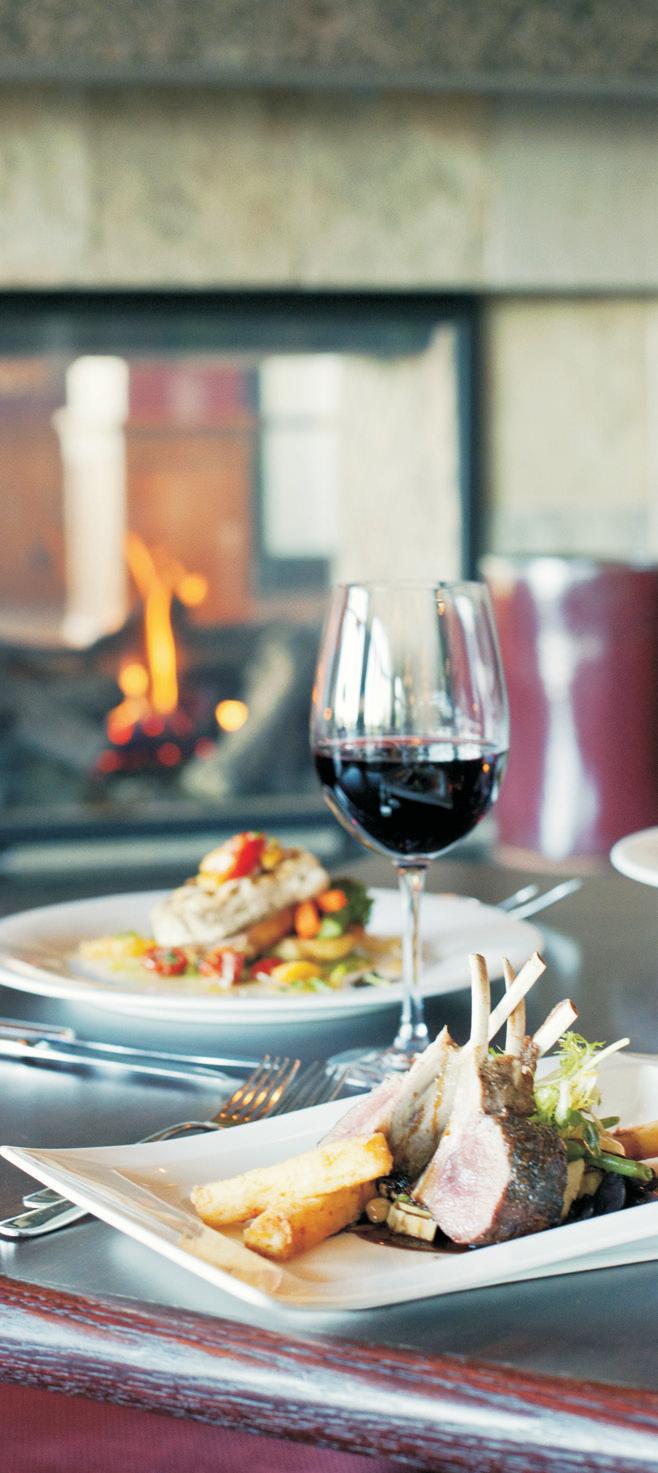
Recently that was San Francisco.
I do in fact spend the first afternoon with a friend of many years, a landscap e designer who lives just outside the city. She zips us to an unprepossessing quarter of Berkeley where we catch up over lunch at Vik’s Chaat Corner, a bustling Indian cafeteria and market that Sue discovered while plant shopping nearby. “Chaat” means literally “to lick” and, by extension, “snack.” Sue and I share a dosa, which when split in half spills its veggie goodness from its delicate crêpe-like cylinder. The Dahi Papdi Chaat, which translates into a bowl lined with little flatbreads (papdis), corrals stewed potatoes and chickpeas dolloped with tangy yogurt and served with red and green chutneys. The latter is a delicious burst of cilantro and citrus. I pick up a jar on my way out. We hasten to the Berkeley Farmer’s Market. The strawberries and sweet pluot plums in my basket insist I pop into the Cheese Board for Point Reyes Blue Cheese to accompany them.
Sue heads off and I am on my own. Like Portland and Seattle, San Francisco happy hours are a big thing. Michael Minha’s Swish RN74 is the place to get down with buck fifty oysters and a bar menu and perhaps the burrata cheese, grilled shiitake mushrooms with toasted pinenuts on grilled bread and a glass of Sauvignon Blanc. Likewise, happy hour at the quirky Jellyfish Lounge (the large lamps overhead are glass “jellyfish” orbs), where six dollars buys me a half-dozen oysters, another six a classic Manhattan and six more a nice little array of housemade salami, lonza (cured pork loin), micro-greens and grilled levain.
The Mission’s 24th Street corridor is a hodgepodge of funky Latino food places. One is Casa Lucas Grocery, which rewards with every kind of pepper imaginable, bottle upon bottle of green and red hot sauce, wee buttery avocados and toothy grins from folk who fire off rapid Spanish. I buy a stack of right-from-the-oven tortillas de nopal (cactus) at La Palma, which also fixes the hands-down best taco I’ve ever had—a thick soft disc stuffed with chile verde, black beans, pico de gallo and cilantro. It drips deliciously down m y chin at first bite.
On the bus back from the Mission I spot Bouche, a tiny Provençale Wine Bar and bistro that beckons me. It’s butt to butt on barstools that hug a short bar or standing room only. I manage to score a seat and a couple of glasses of Fitou, which go down a treat with potato beignets alongside roast pork ragu and a wild mushroom medley. A couple of blocks away, I could be in Paris at Café Claude. I idle away an hour taking in a little smooth jazz. French rosé and spicy steak tartare served with a soft poached quail egg are the perfect union for this alley hideaway.
With time to spare the following afternoon, I wander into La Mar Cebicheria Peruana, just down from the Ferry Building. (My find this time at the Ferry Building farmer’s market was jalapeño sauerkraut.) I learn later that La Mar is one in a series of sophisticated cebicherias owned by Peruvian chef Gaston Acurio. Others are located in the chef’s native city of Lima, as well as Bogotá, San Paolo and New York. The cebiches (or ceviches) are simply outstanding. Japanese/Peruvian chef Diego Oka heads up the San Francisco kitchen. My ceviche mixto included tender mahi-mahi, prawn and squid and was napped with yam and whit e Peruvian corn, bathed quickly in “tigre de leche,” a cross-culture marinade of aji Amarillo (chile paste), lime, ginger and cilantro. Nikei resembles sashimi but is slivered yellow fin tuna suffused with tamarind tigre de leche.
Was I ever lonely? Never. I bumped into other lone travellers, among them a wine importer, a chef and a restaurant owner—like-minded folks who chatted with me, sharing storie s or suggestions, maybe over a beer or a nosh. Then off we went, happy to go our separate culinary ways. Perfect. Happy hour indeed.

Every day, more and more compelling research confirms the health benefits of wholegrains and how these super-foods can help prevent everything from diabetes and obesity to cardiovascular disease and certain cancers. Thankfully, health-conscious foodies have a wealth of scrumptious whole grains to choose from—there is no reason to be stuck in a “whole-wheat, brown-rice rut”! If you are in that predicament, try incorporating some of the following intriguing new grains into your diet. You’ll enhance your meals and your well-being.
Black Barley
Originally from Ethiopia, this darkly hued variety of barley is now being cultivated in North America. When cooked, the nutrient-dense grain transforms from black to a lovely glossy mahogany and offers an appealing chewy texture and nutty taste. High in fibre, protein and iron, black barley is also chock-full of health-promoting anthocyanins. These phytochemicals, which give the grain its unusual colour, act as powerful antioxidants, helping to stave off chronic disease. Superb in vegetarian and Mediterranean cuisine, black barley’s glossy appeal adds aesthetic intrigue to pilafs, salads, risottos and more.
Farro






You may not have heard of farro—an ancient heirloom variety of wheat—but it’s hardly a new kid on the culinary block. It is, in fact, one of the world’s oldest grains. In Italy, from whence it originates, it has been a ubiquitous part of the diet for more than 2,000 years. Farro is now garnering attention on these shores—with good reason. The ancient grain contains more B vitamins and twice the fibre and protein of modern wheat. In addition, it plays host to a unique groupof carbohydrates called cyanogenic glycosides that can help lower cholesterol and boost the immune system. Equally notable is the fact that many people who are sensitive to modern wheat’s gluten structure find they can consume farro with no ill effects. However, what is really winning the grain legions of fans is its superb taste. It boasts a sweet caramel nuttiness and field-grain richness that truly delights the palate. Try it in soups and salads or use it to replace rice in any dish. It can also be ground and simmered like cornmeal to make an unforgettable polenta.

Forbidden Black Rice

This jet-black rice, once reserved for Chinese emperors, is now garnering praise from chefs and home cooks worldwide. The culinary commendations are well deserved. Like black barley, forbidden black rice “bleeds” when cooked, shedding its black colour to take on a visually appealing deep-purple hue. Its vivid colour is paired with an equally compelling taste and texture—it’s more robust, nuttier and far chewier than either white or brown rice. The unique heirloom grain is also more nutritious than its blander cousins—containing more vitamins, minerals and flavonoids than any other rice variety. In addition, like black barley, the dusky grain boasts an abundance of disease-fighting anthocyanins. The grain is extremely versatile, shining in both sweet and savoury applications, and imparts a delicious exotic note to everything from soups, salads and pilafs to rich gooey desserts.
Freekeh
Freekeh is wheat harvested when still green—then sun-dried, roasted and rubbed. Used in the Middle East for millennia, the ancient grain is becoming popular in North America thanks to its health benefits, flavour and shout-outs from TV icons Oprah Winfrey and Dr. Oz. What has the celebs so impressed? Freekeh is a nutritional powerhouse—it has a higher protein-to-carbohydrate ratio than most grains, four times more iron, potassium and fibre than brown rice, and is teeming with cancerfighting carotenoids. In addition, it is rich in prebiotics and resistant starch—two substances renowned for enhancing gut health. Equally outstanding is the grain’s taste—it has a delectable, somewhat sweet, somewhat smoky flavour that lends itself beautifully to stuffings, veggie burgers, salads and more. You can also serve it as an enticing side dish or use freekeh flour to make an array of interesting breads and pastries.
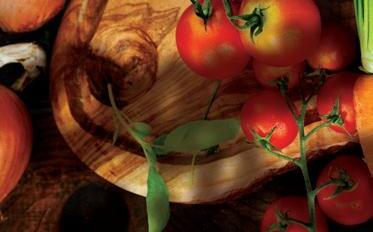
A WHOLE OTHER WORLD OF WILD FOOD EMERGES OUT OF THE MIST AND CRISP WEATHER OF AUTUMN
Fall, I confess, is my favourite season. More than the crisp weather or the vibrant colours of changing leaves, I love the food this time of year has to offer. As the fresh greens and berries of summer wilt and fall, I can’t wait to sit down to a hearty meal and a smooth, malty ale. While it may not have the wild abundance of summer, fall also offers a variety of wild edibles to get us through those cooler evenings.
Often overlooked in bramble patches and along park paths, wild roses thrive in both woodland and urban environments, making rosehips an easy choice for the aspiring but busy urban forager. Left over after the flowers have come and gone, the hips are ready to eat as soon as they begin to soften and turn a vibrant orange-red, but wait until just after the first frost for peak sweetness. Take advantage of the fruity, sourcherry flavour and aroma with rosehip jams and sauces, or dry them for a vitamin-rich winter tea. Remove the seeds before cooking or drying, as they are covered in irritating spines.
Fall is a time when many folks take to the woods in search of wild game, and some of the most readily available and delicious game is the common mule deer. Leaner than beef, more flavourful than pork, and less pungent (usually) than mutton, venison is an integral part of my fall menu. While the stronger flavour of game may seem intimidating, anyone who enjoys lamb or goat is sure to love well-prepared venison. Remember to cook slowly and baste often—overcooked venison is only slightly more appealing than shoe leather. For those without access to wild game, Lifestyle Markets in Victoria and Naked Naturals in Parksville and Qualicum Beach offer New Zealand farmed venison from Hills Foods. Island-raised venison is available from Seaview Game Farm (seaviewgamefarm.com). They sell onsite and also at the Comox Valley Farms market.
Tubers are an integral part of any hearty fall meal, and the wapato tuber is perfect for a wide range of wild meals. Also called arrowhead after the shape of its leaves, this plant is traditionally harvested by digging bare feet into murky wetlands until the ripe tubers float to the surface. While the fresh tubers give off a pungent musk, they develop a unique nutty sweetness after roasting, boiling, or frying. Once abundant, their habitat has been severely constrained by agriculture and development, so harvest sparingly and leave several tubers to regrow for next year.
I asked Sooke Harbour House head chef Rob Clarke to craft a meal featuring these ingredients. He recommends venison loin encrusted with sautéed and dried chanterelles with shallot, paired with a roasted wapato purée. To this, Clarke adds caramelized rosemary poached pears and a warm salad of wilted arugula and dandelion greens with grand fir-infused maple bacon. Onion and chanterelle ragout, seasoned with sweet cicely, and pinot noir stewed rosehip jus finish the dish. For the full recipe visit www.eatmagazine.ca
Fall is also a time when light, crisp beers disappear from the shelves to make room for the fuller flavours of dark lagers, brown ales and spiced brews. For a unique complement to the strong flavours of venison and the vibrancy of rosehips, try Black Better Blackberry Saison, a first for Vancouver Island Brewery. The spicy and earthy notes of saison mixed with blackberries’ voluptuous fruitiness are sure to add new depth to this season’s wild ingredients. For a more subtle pairing, try VIB’s Storm Watcher winter ale; its smooth malts and caramel finish will let the flavours of wapato or venison shine through.
For his dish, Chef Clarke recommends the Skookum Brown Ale from Phillips Brewing. Another Phillips fall favourite—Crooked Tooth or the barrel-aged Crookeder Tooth—or Driftwood’s year-round Farmhand Ale would also bring out the sweetness and spiciness of the meal. To ensure your beer pairing won’t compete with the strong flavours of venison, wapato and rosehip, avoid the extremes of light, dark or ultra-hoppy beers.
As always, respect the health of individual plants and ecosystems on your foraging adventures. Avoid potentially contaminated areas when harvesting in an urban environment, and remember—take care of the ecosystem, and it will take care of you.
DIRECT TRADE COFFEE PROCUREMENT
SMALL BATCH, LOCAL ROASTING
CARBON NEUTRAL COMPANY
EDUCATION & TRAINING COURSES
40 YEARS OF EXPERIENCE...
WE ARE A SECOND GENERATION, SUSTAINABLE FAMILY BUSINESS WITH A PASSION FOR SPECIALTY COFFEE.



















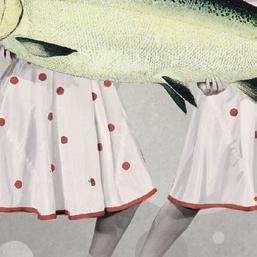




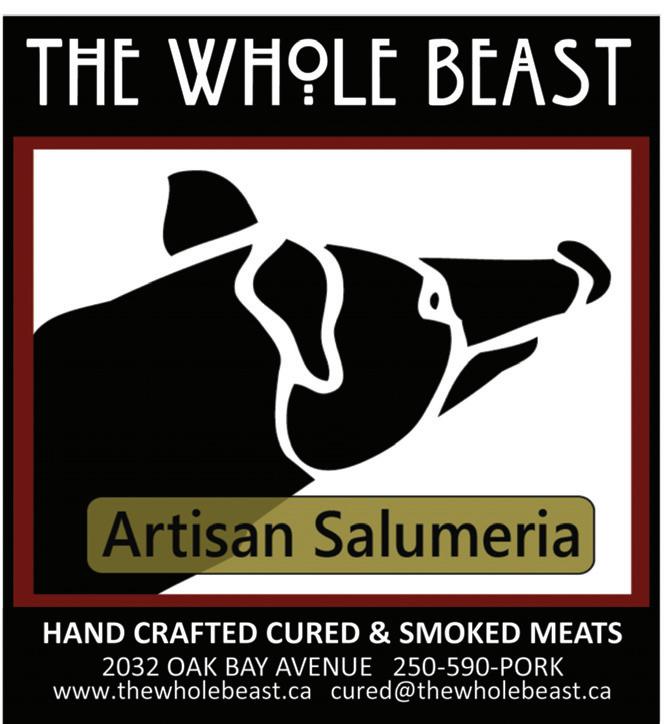












This round cabbage family vegetable has pale green flesh and long edible green leaves supported by sturdy leaf stems. Squint at the intact plant, and it might conjure up the shape of a miniature hot air balloon, its bulbous basket held aloft by robust ropes attached to a tall leafy fan. The bulb is usually sold with its leaves chopped off. The leaf stem stumps jut out every which way, giving the bulb a bizarre appearance, which has been humorously compared to a small Sputnik or an alien life form.

Despite its appearance, kohlrabi isn’t a root vegetable. This oddball bulb grows above the ground and is part of the plant’s stem. The bulb’s mild sweetness and delicately pungent radish-like kick are reminiscent of its cousin, the turnip. Purple kohlrabies are sweeter than pale green ones.
Kohlrabi greens taste similar to kale and collard greens. They are tastiest when they are young and tender. They can be sautéed, boiled or used in curries, soups and stews. Delectable sprouts and microgreens can be made by sprouting kohlrabi seeds. This nutritious, potassium-rich vegetable is popular in Italy, France and Germany and is a staple of northwestern India’s Kashmiri and Punjabi cuisines. Canadians hav en’t wholeheartedly embraced this kooky vegetable’s charms, perhaps because they don’t know how to cook it. All that is needed is some inspired experimentation.
Young, small (no bigger than a tennis ball) kohlrabi is sweet, crunchy and moist when eaten raw, with the texture of a crisp apple. Older, larger bulbs turn tough and woody. My favourite way to eat it is in its baby stage, raw, fresh from the garden, with a dash of
sea salt. Its outer skin is flavourful and extremely nutritious, so if you’re cooking peeled kohlrabi by boiling it, add the skins to the pot and reserve the beneficial cooking water for soup stock. Kohlrabi can also be stir-fried, braised, roasted with root vegetables, or made into oven fries with parmesan cheese. Use raw shredded kohlrabi in Vietnamese kohlrabi radish salad or in zesty carrot, apple, fennel bulb slaw. (Hot tip: Lightly salt the shredded bulbs; let stand for 30 minutes, and squeeze to remove excess liquid.) Scoop the flesh from peeled bulbs, stuff them with their chopped flesh, ground lamb, beaten eggs, breadcrumbs and spices, and bake them in the oven. Use the leaves and bulbs to make spicy Kashmiri-style red curry. To make Sicilian-style wet pasta with kohlrabi, boil peeled chopped kohlrabies with their peels and chopped greens in salted water until tender. Remove veggies and discard the peels. Use the tasty liquid to boil gnocchetti or penne pasta. Drizzle olive oil on the pasta, kohlrabi and greens and sprinkle with chopped chilies and grated pecorino.
Kohlrabi is available year-round in most supermarkets, and in early summer and fall from farmer’s markets. To grow your own, plant seeds from mid-July to early August for fall and winter harvest; direct sow early April to mid-May and harvest the bulbs in eight weeks.
This vegetable may look like it’s from outer space, but it’s wonderful for your inner space.
For a recipe for Punjabi Kohlrabi visit www.eatmagazine.ca/recipe

IT MAY LOOK LIKE AN ALIEN LIFE FORM, BUT KOHLRABI IS NUTRITIOUS AND TASTY FOR HUMANS
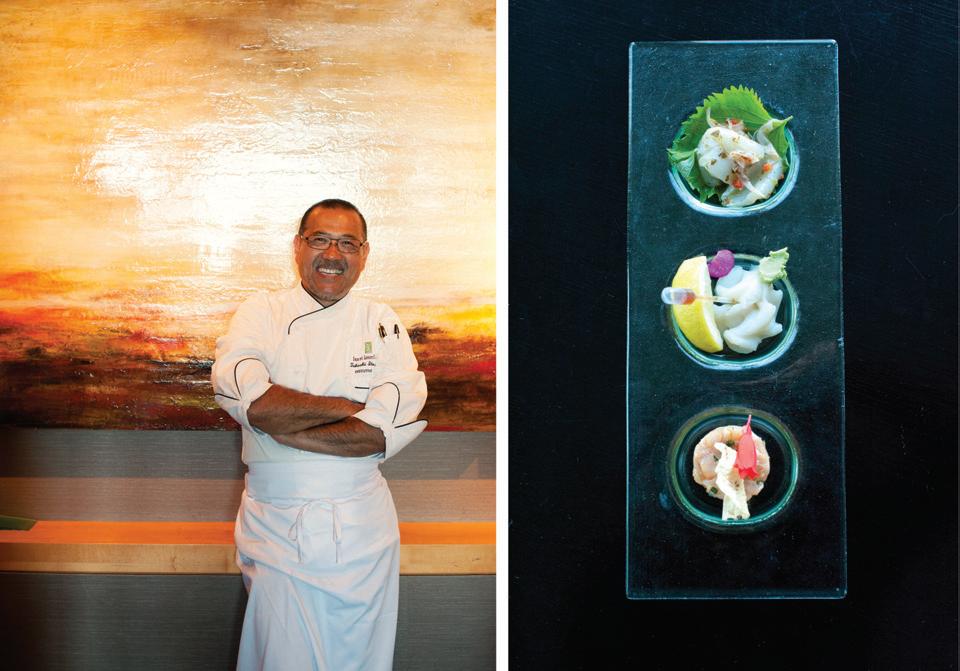
My first brush with geoduck (pronounced, weirdly, “gooey-duck”) was in one ofToronto’s hyperactive Chinatowns.
A Caucasian customer was pointing to the curious shellfish food writers invariably compare in appearance to the male organ (that we should be so lucky).
“Whazzat?” he asked.
“Gooey-duck,” replied the surly Chinese fishmonger.
“What is its flavour like?” asked the customer.
“NO FLAVAH!” screeched the fishmonger.
The poor man fled the premises.
However, turns out the fishmonger was wrong: geoduck has flavah, after all. It’s sweet and briny. And it has a mild, pleasant crunch.
It’s a clam, a giant clam whose “siphon” grows out of its shell to snake-like lengths as long as two metres. It’s one multi-talented organ. It eats, breathes and, yes, mates.
Although largely associated with Asian restaurants (t he Chinese translate it as “elephant trunk clam”), it’s a native of the west coast of this continent, especially B.C. Yep, Islanders, it’s one of us. Its fascination is partly attributed to its longevity. One of the longest-living creatures in the world, it outlives us. The oldest discovered by science lived for 168 years. Geoduck gourmands pray this will rub off.
Nor is it just geoduck’s phallic shape that spurs its reputation as an aphrodisiac. Its amino acids and zinc content pump up sex hormones and testosterone: Viagra in a clamshell.
Accordingly, geoduck jokes could fill a book: “... a burrowing clam that inhabits the worst nightmares of Sigmund Freud,” one wag called it. “Mermaids use these to pleasure themselves,” cracked another. ”Every man’s dream and every woman’s nightmare,” chef David Pasternack called it.
The first geoduck farmers were the natives of the Pacific Northwest. The word “geoduck” derives from the Nisqually tribe word “gwe-duck,” translating as “dig deep” (referring to the fact that it burrows a metre or more under intertidal flats and spends its entire tedious life in one position).
The Japanese serve it as sashimi. Koreans do it raw, too, only with fiery chili sauce. It sells in China for more than $300 a kilo, making it a serious aquacultural export for B.C. and Washington State. South of the border, it’s an $80-million industry. In 2007, B.C. licensed its first geoduck farm, on Hernando Island.
It’s all but non-existent in Victoria restaurants, but executive chef Takashi Ito has it on his menu at Aura in the Inn at Laurel Point. Ito feels the appreciation of geoduck is much hampered by the name. He calls for a rebranding and he’s probably right. He calls it “king clam.”
Ito chuckles when he advises curious diners to see the intact geoduck only after they’ve eaten it. He offers it as sashimi, and rightly so: in the raw, its flavour and texture kick in
with no distractions.
Ito promises it’ll remain on the fall and winter menu, as a chowder, clam fritters or a crabcake-like cake (in which it reveals a scallop-like sweetness).
Happily, there’s no shortage of geoduck in mainland restaurants. Chinese restaurants in Richmond and Vancouver have long been lauded for their geoduck acumen. The 2013 Chinese Restaurant Awards gold winner was Tony Luk of Richmond’s Jade Seafood for his sautéed geoduck with egg whites and Italian herbs. Bronze winner was Wing Ho of Fortune Seafood House in Burnaby; he shredded the geoduck, bundled it up with ham, mushroom and carrot, simmered the lot in chicken broth and sauced it with, egads, foie gras.
Geoduck at home? Unfortunately, it’s not available over Victoria fish counters, either. But, turns out it can be purchased at T&T Supermarkets in Vancouver at about $20 per pound. (In the U.S, Amazon sells it, with free two-day delivery.)
Preparation is straightforward. Visit www.geoduckrecipes.com/prepare-geoduck/ for easyto-follow instructions.
So my geoduck dream lives on. I plan to sauté the mollusk ever so lightly and then, gilding my gastro lily, sauce it in sea urchin. A double-shot aphrodisiac. Should have my wife shouting “Down boy! Down!” through the candlelight.
AURA | 680 Montreal St Victoria, BC | 250.414.6739 | aurarestaurant.ca


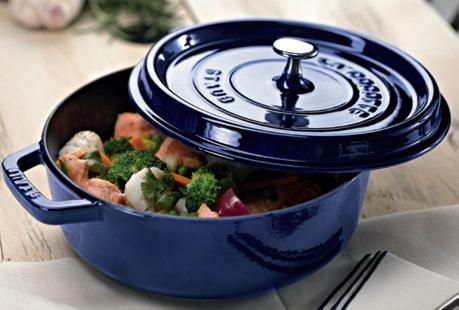


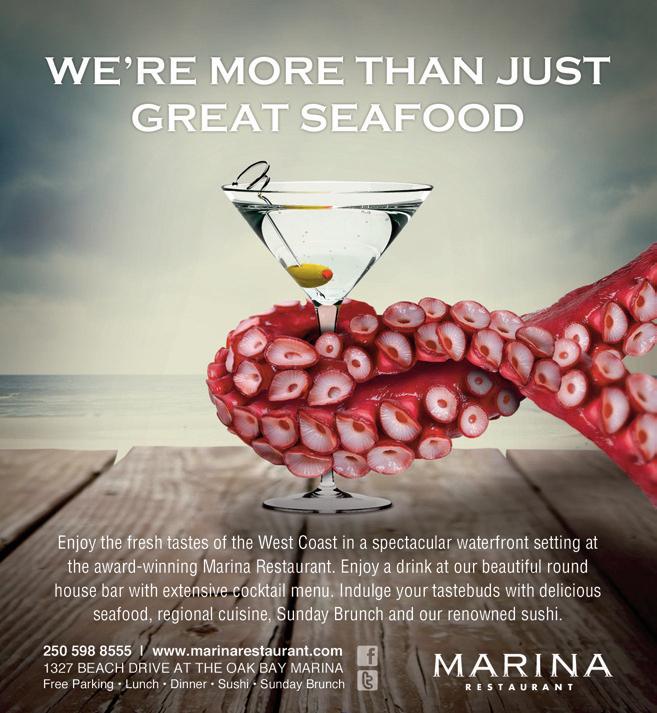
theguildfreehouse.com
Have you recently done a double take on Wharf Street as you passed the historic red brick building at the foot of Yates? The Chandlers signs have b een removed and a new sign is up, announcing The Guild, established 2013. As far as I can tell, few locals had ever stepped inside the seafood restaurant that occupied the space for more than 20 years, dismissing it as a tourist trap. Sam Benedetto, chef and part owner of the new establishment, was well aware of the association. “It’s in a bit of a blind spot,” he admitted in a recent interview, though he is quick to say how hard the staff is working to diffuse the prejudice. After six weeks of scrubbing and painting, the downstairs, which seats 70, has been restored to its former glory: the high pressed-metal ceilings, dark wood trim and beautiful, old-fashioned bar all shine once more. Raised tables and new chalkboards bring the space graciously into the 21st century. If you’ve ever been to Oddfel lows in the Capitol Hill neighbourhood of Seattle, you’ll recognize the vibe—relaxed old school with a side of hip. Despite being located in a no-go land for locals, my first visit convinced me that the Guild is most certainly not a tourist trap. In fact, I’m a little reluctant to tell you how good the food is (though you can probably guess when you hear Benedetto is a former Sooke Harbour House chef). The Guild has showed me that the first couple of months of an as-yet-undiscovered restaurant can be a glorious time. I have returned on several occasions for the consistently excellent food and beer, lovely service and atmosphere, and (as-yet) uncrowded ambiance. The only thing that could really use improvement (observed by a musician friend I met there one evening) is the playlist. (“Maybe I should be a restaurant music consultant,” she mused as she munched on a maple-glazed rasher of bacon, served in a glass. Then her thoughts turned back to the food. “This is seriously the best bacon of my life.”)
Over a two-month period, I have sampled lip-smacking salt cod fritters with a tangy tomato-ginger chutney ($6); the Welsh Rarebit—comfort food for grownups in the form of toast with a smooth Double Gloucester and aged Cheddar sauce ($10); French fries with an addictive curry dipping sauce ($7); a crisp salad of baby gems, grapes, celery, walnuts and Stilton; and the smoked trout and frisee salad with an invigorating mint and green chili dressing and slices of pickled star fruit—equal parts decorative and delectable. Both salads are $10.
I have sipped on a light summer apricot ale from Seattle’s Pyramid Breweries and the classic Hoyner Pilsner from Victoria’s Hoyne Brewing Co. (excellent with the roasted pork and sage Derby sandwich). Both were among the 12 options on tap this summer. The beer list reads like a guide to the best craft and microbreweries of the Pacific Northwest. Along with the 12 on tap, there are up to 40 choices in the bottle. And, yes, I have ordered (and shared) the sticky toffee pudding three times. (Just to be sure, for your sake, of course, that the quality is consistent. I am a meticulous researcher.) The lemon posset is a dessert that hearkens back to Downton Abbey-style tables and is also memorable.
This is a taste of authentic British pub fare done right, made by a chef with a tangible nostalgia for the real deal. Benedetto was in London for four years before returning to Victoria and still misses “stopping in for a pint” on his way home from work. Not surprisingly, he is using all the best local ingredients (Saanich Organics and Ragley Farm produce, FAS seafood, Two Rivers meats.) All said, I’d advise you to check your blind spot before the tourists catch on.
BY REBECCA BAUGNIETChef Ronald St. Pierre fell in love with the Comox Valley when he and his wife, Tricia, were looking for a place to raise a family.
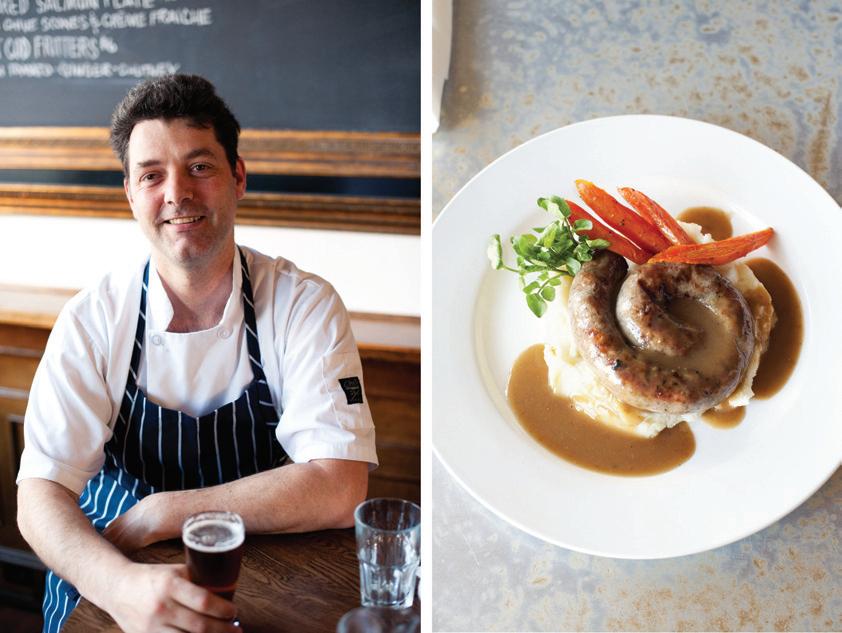
“I loved the area, the ocean and mountains. My wife was a nurse and could work at the hospital, and Courtenay was a coastal town without the smell of a mill,” St. Pierre explains while wrinkling his nose above a thick mustache. “I started cooking at The Old House in 1990, and I’ve been in the Comox Valley for 23 years.”
St. Pierre was executive chef at The Old House restaurant for eight years and recently returned after cooking at Crown Isle Resort, Otter Bistro and Kingfisher Inn from 2001-2008. He opened Locals in downtown Courtenay in 2008, and in May 2013 relocated his acclaimed restaurant to the picturesque site of The Old House, a rambling, 75-year-old Arts and Craf ts building overlooking the Courtenay River.
“The thing I love about Locals is farmers and fishermen, my neighbours, showing up at the back door with fresh fish, vegetables, berries. After working in big-city restaurants, where supplies often take days in shipment, I had a guy show up at the back door with beautiful watercress picked out of a nearby ditch this morning!”
St. Pierre grew up in a small village east of Montreal, his mother and stonemason father raising six kids on a modest income and the vegetables they grew and animals they bought from their neighbours.
“We had a cellar for root vegetables in the winter, and my father would do all the butchering and processing of the animals,” St. Pierre remembers. “Last year I froze two tons of tomatoes for my sauces, and one of my farmers dug a cellar for winter storage to supply Locals year-around. I didn’t reinvent the wheel,” St. Pierre adds with a chuckle.
For our meal at Locals, my wife and I shared an organic beet and goat cheese salad, warm Pattison Family beets and Okanagan goat cheese on Eatmore sprouts with roasted pine nuts and sherry vinegar. After ordering a glass of Beaufort Winery Ortega, I slurped six, raw Cortes Island Gem oysters, so fresh they were like eating the sea. Next, while sipping a Beaufort Shiraz-Merlot blend, we sampled an ethereal Island-grown bison carpaccio, thinly sliced and marinated, and served with Natural Pastures’ Parmadammer cheese and capers on walnut crostini. Chef St. Pierre has a brilliantly light touch with his fresh, local ingredients. We shared a pulled pork tart, the Tannadice Farms slow-braised pork baked on a thyme-spiced potato crust and served on pan-seared pork loin medallion. In addition to the Comox-based Beaufort Winery offerings, Locals has an extensive list with eight whites and eight reds by the glass, most from B.C. They also offer Lighthouse on tap, 10 other local beers, local ciders, mead and fruit wines. We capped our
delicious meal with chef’s Brulée Trio, a sweet treat featuring vanilla, berry and chai-tea-infused crème brulée.
“Over the years, The Old House has had four different owners. It closed in March 2011 after a big fire. Last year they were selling off everything, and I came to buy tables for my downtown Locals. We were also looking for a new location. So we decided to rebuild and bring back the Arts and Crafts charm of The Old House, all of those beautiful old posts and beams and woodwork.”
With a kitchen staff of 20 and its new, 750-square-foot kitchen space, Locals provides a fitting venue for St. Pierre’s passion for cooking and vision of connecting producers with the public. It’s a superb restaurant for casually elegant fine dining.
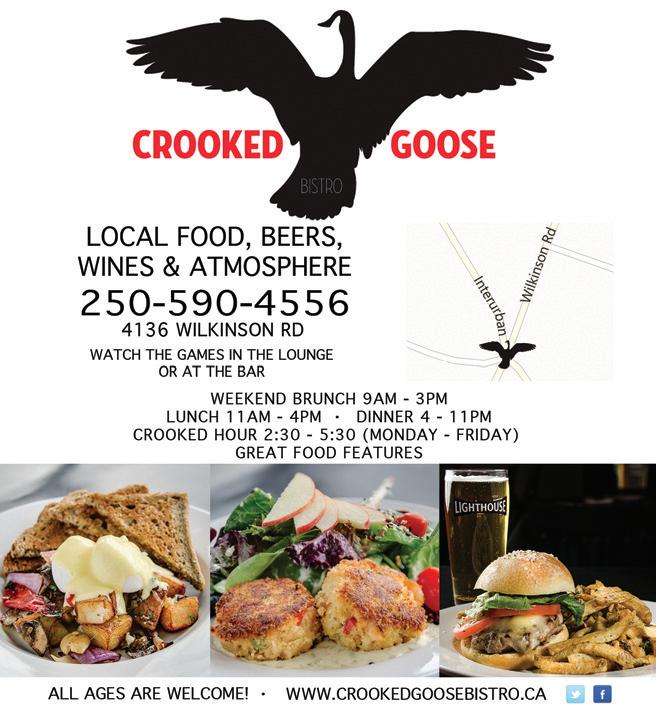 BY JOSEPH BLAKE
BY JOSEPH BLAKE
727 Courtney St. | Victoria | 250-361-4998 | http://heistcoffee.com/





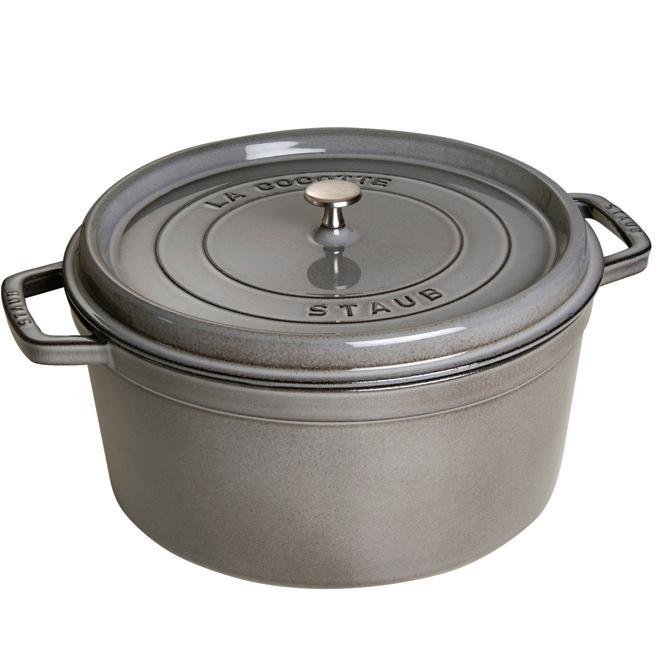
Being the new kid in town can be hard, but when you brew a cup of coffee as good as Heist Coffee Co., it’s easy. Heist opened its doors in December 2012 and hasn’t looked back; owner Graham Bouvier knows his coffee very well.
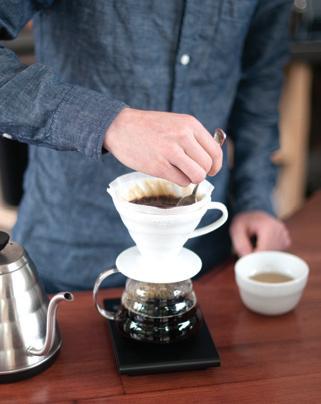

Bouvier has a brewing-rich history that started in Calgary at Phil & Sebastian and moved to Vancouver, where he worked at Caffè Artigiano. While there, his co-workers helped him expand his coffee palate by constantly plying him with sample coffee cuppings to find the differences between styles. Graham spent a few years honing his skill at the bar and learning. He then landed at The Parsonage Café (part of Fernwood Coffee Co.) in Victoria. While there, he was fortunate enough to participate in the Canadian Barista Championships, competing in the Western Canada regionals, where he placed second overall. Later that year, he placed sixth at the national level. Bouvier says he wants to go back and do better and has started to experiment for the next competition. This year, he decided, would be the year he opened his own coffee shop after “falling in love with coffee over the years.” He calls Heist a multi-roastery; he serves a long list of different brands and types: Anchored (from Nova Scotia); Bows and Arrows (Victoria); Phil & Sebastian (Calgary); Matchstick (Vancouver); Art Coffee (Portland); and Handsome (Los Angles). Bouvier orders only enough beans for a few weeks at a time, rotating the types throughout the year. This allows clients to try different blends and thus have new coffee experiences.
Although it may be a different brand, the style of coffee you get from week to week is still very much the same. Bouvier has a cold extraction unit and an espresso machine but prefers to use the pour-over method of brewing, which allows the beans’ flavours to fully express. The coffee is a lighter colour, is a complex balance between acidity and tart (but not bitter). It takes on many different flavours (nutty, floral, sweets, savories) through this method. To help customers discover these flavours better, Heist holds tasting events. (Check out their Facebook page for dates and details at facebook.com/HeistCoffee). Bouvier decides on a few coffee varieties to serve, then pairs them with a snack that brings out more of the flavour profile—one weekend he served housemade potato chips to go along with the cuppings of coffee.
That said, there isn’t a lot of food at Heist, but that’s not the point. Heist is somewhere you go to get a really, really, good coffee or to learn something you might not have known about coffee. If you need a snack, there is Byron Fry’s Red Wheat toast with housemade jams or muffins and scones from Relish. So consider changing up your coffee routine and going down to Heist. Have Bouvier make you a pourover from one of the different coffee beans he’ll have in stock that day, and listen as he explains what to expect in your cup. It will probably change your mind about how coffee can taste.
BY COLIN HYNES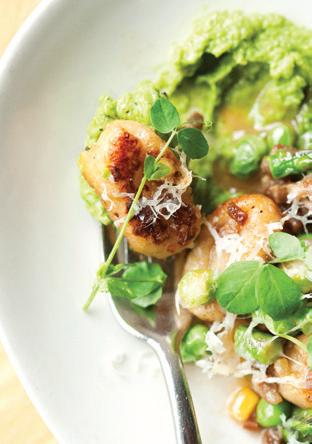

Graham Meckling flashes a boyish smile that could light up a room when he tells mehow muchhe loves Stage Wine Bar, the Fernwood neighbourhood bistro he bought from George and Linda Szasz a year ago. The husbandand-wife team opened Stage six years ago after selling Paprika, their popular Estevan Village restaurant, and many of their Oak Bay customers followed them to Stage for small-plate dining and a well-curated wine list.
“When I bought Stage,” Meckling explains as we settle into a window table in his comfortable, exposed-brick-walled bistro, “people were worried abou t what I was going to do, how I was going to change Stage. I’ve been in the restaurant business for years, beginning as a busboy at Earl’s in Winnipeg right out of high school in the mid-1990s. I’ve worked in kitchens, front of house, behind the bar and in management across Canada and New York’s East Village before coming to Victoria in March from frozen Winnipeg. I’ve worked for a decade in Victoria at a lot of places—Earl’s, Sticky Wicket, Darcy’s. And one shift at the Empress,” Meckling adds with a grimace. “I just wasn’t cut out for a union job.”
When he bought Stage, says Meckling, he wanted to put into practice everything he’s learned. “Stage has a reputation as a place for great food and wine, the kind of relaxed, neighbourhood bistro you find in Vancouver and New York. I wanted to build on that by establishing my best-friend philosophy, be the guy at the front door welcoming people and thanking them for coming in when they leave. I see my job as respecting people who come to Stage, getting rid of any distractions from the meal. I clean the restaurant myself, sweep outside and clean the windows, make sure the music’s not too loud. I see my role as the good stepdad. Stage is really Stephen’s place.”

Stephen is Stage’s charming, Irish-bred bartender Stephen Quigley. Another bistro veteran is Denman Island-bred chef Amanda-lee Chesley, who has been cooking at Stage for four years. She and Quigley head a 12-member staff Meckling calls “a great team. “Right now we have four chefs back there in the kitchen who are in love with each other.”
Chef Chesley sends out a few of her small plate o fferings to sample, and I choose a Seven Directions 2012 Pinot Noir Rosé from the chalkboard list of 17 wine specials available by the glass. Veteran sommelier Marlisa Hollands’ current offering includes five other B.C whites and three Okanagan reds from Desert Hills, Laughing Stock and Le Vieux Pin, as well as a well-chosen selection from Spain, France, Italy, Australia, New Zealand, Argentina, and California.
Stage’s gnocchi is made from scratch and features house-cured lamb bacon and localgrown peas. The panko-crusted poached egg that follows is plated with grilled asparagus, and the halibut cakes are a delicious all-fish dish with a subtle, red pepper sauce. Chef Chesley has a delicate touch with spices.
“We want to offer simple, local ingredients made well,” Meckling explains as we enjoy another refreshing glass of Seven Directions rosé. “Stage’s unpretentious atmosphere reflects Fernwood’s warm funkiness. We’re a go-to venue for a meal before a show at the Belfry, but I see my opportunity in developing Stage as a place to go for good wine and food in a relaxed neighbourhood later in the evening. I see our growth with a younger demographic from 8 p.m. on. I’ve got plans to open at least one m ore wine bar like Stage downtown and have my own farm to provide most of our fresh ingredients. That’s my dream.”
BY JOSEPH BLAKEIndia Bistro | 1245 Wharf St. | 250-382-8662 | www.indiabistro.ca






What springs from Mother India’s kitchen is the most scintillating of cuisines, a symphony of spices that plays on our palates as melodiously as Pachelbel plays to the ear. To dine well is to eat with the gods, and there are, after 4,000 years of refinement, almost as many dishes as there are deities in the Hindu pantheon.
Coriander, cumin, tamarind, garlic, ginger, saffron, cardamom, mustard seed, red chilies, green chilies: they’re the players over the fires of India, and it’s the way they harmonize that defines and elevates the dish.
In Victoria, we’d barely know. This little city has long been shortchanged by subcontinental spicemeisters. I’ve journeyed India nine times, from the Himalaya to the Bay of Bengal, and found my worst Indian restaurant ever in Victoria.
So it’s a great relief to report change in the cumin-scented air. First, Sizzling Tandoor and, most recently, India Bistro signal the arrival of restaurants that show respect for Indian cuisine and us who crave it.


When the 140-seat Sauce on Wharf Street closed earlier this year, restaurateur Kamal Mroke, whose family owns a dozen restaurants including the original India Bistro on Vancouver’s Davie St., acquired the space and embarked on the conquest of Victoria.

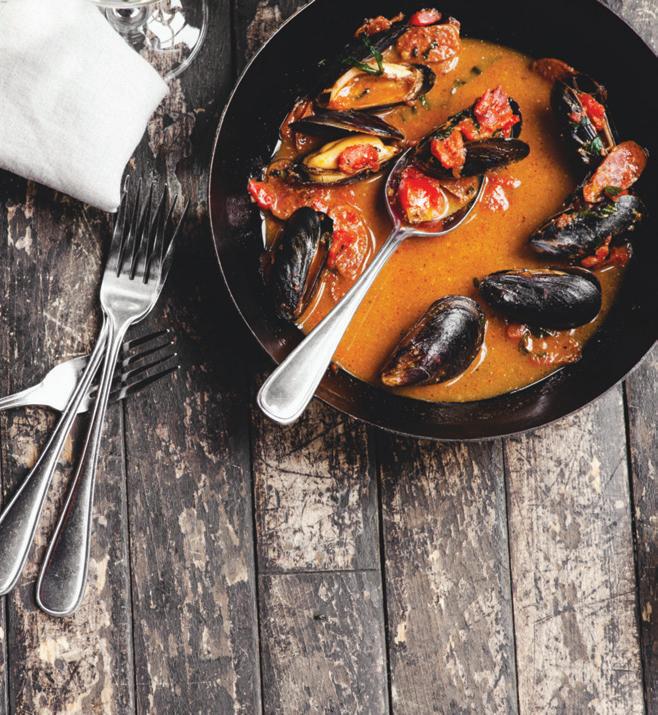
It’s a sprawling, handsome room happily free of the usual kitsch: no Krishna frolicking with his gopis here. There’s also a spacious streetside patio for those who prefer their spices with a soupçon of automobile exhaust.



The menu covers all the customary North Indian (we pray that South Indian will follow) bases from butter chicken to lamb vindaloo. Prices are higher than average. At this writing, there were no concessions to the lunch crowd, a risky strategy when the tourist throng has left and thrifty Victorians check out the competition (the rival Sizzling Tandoor offers a $12 buffet).
Crackling papadams ($2) with coriander-mint and tomato-chili chutneys make for a promising first nibble. Then the apps: crisp onion bhajia ($7.95), India’s answer to deep-fried onion rings, trumps both fish pakoras stuffed with insipid Pacific sole ($9.95) and vegetable samosas ($4.95) for crunch and flavour.
Mains arrive handsomely in colander-like chafing dishes. The Goan specialty chicken vindaloo ($15.95) lives up to its hot-and-sour reputation with abundant vinegar and chilies, and its gravy is heavenly. Similarly, the milder la mb shahi korma ($18.95) in a sublime gravy of cashew nuts and spices, leaves the palate reeling. But in both cases, protein portions prove exiguous: a mere handful of bite-size pieces leaves the diner hungering. This needs correcting.
Vegetarian dishes prove more substantial, and they’re fine. Pea palao ($5.95) brings fragrant basmati rice with green peas. Eggplant bartha ($13.95), the measure of any Indian restaurant, marries the smoke of the open flame to tomatoes, onion, garlic and ginger, passing with honours.

Service is friendly, attentive and knowledgeable. Beer is the appropriate imbibation and a pitcher ($14.95) represents a deal, especially when it’s Guinness.
 BY JEREMY FERGUSON
BY JEREMY FERGUSON











It seems niche restaurants are on the rise in East Van. First came noodle-only joints like Harvest (Strathcona) and No.1 Noodle House (Gastown), and now we have something truly wunderbar, a little sausage and beer parlour (shades of Stuttgart!) in the heart of Chinatown. Bestie is also the first restaurant I’ve heard to open in Vancouver that raised money through crowdsourcing (twice what they asked for in just under four days). First-time restaurant owners Dane Brown and Clinton McDougall have created a snappy, bright, visually-appealing room (a background in design always helps), small at only 25 seats, but with enough space that you only rub elbows on purpose and after much stretching.
The leitmotiv is fairly self-explanatory, but goes straight into the annals of greatness thanks to the excellent execution of chef Colin Johnson, a seasoned graduate of Andrey Durbach’s kitchens. The sausages are not made in-house, but do come from Oyama (and likely soon from other local producers). Divine food is in the details, and there are plenty here. Sausages are served currywurststyle. First steamed, then fried and chopped, they’re topped with housemade curried ketchup that shakes ketchup foundations everywhere with its smoky goodness. Eight dollars get you one large meat specimen over a healthy portion of twice-cooked fries. For $1.50 more, add the housemade sauerkraut and sweet, Bavarian-style mustard. Classic pork thüringer and smoked bison both left me verklempt, especially when paired with the above-mentioned mustard.
One must also sing an ode to the pretzels. Served warm with “stinky” cheese and gherkins ($7.50), they, and the beets in horseradish sour cream ($3.50), are not to miss.
On my first visit, Bestie still was waiting on their liquor license, so I indulged in one of the home-brewed iced teas, made using leaves from neighbouring apothecaries. Luckily, by the next visit, the license had arrived, and beer was flowing freely into ceramic steins that max out at 24 generously poured ounces each. A bit of red and white (one glass for each) is the sum total of the wine program, but the licker is the schnapps list, which should have displaced Germans everywhere rejoicing, as should the late-night take-out window, which is open to three a.m. on weekends.
BY ANYA LEVYKHAs a dedicated omnivore with a carnivorous soul, the idea of dining on a completely vegan—and possibly raw—meal has never been one to fill me with glee. But, the opening of the new “plant-based” Graze in my ‘hood peaked my interest. Owner Michael Lyons and Executive Chef Karen McAthy have taken a holistic approach to the restaurant, extending the idea of sustainability beyond the food. A herb and vegetable garden—it’ll be rain-watered—is being built, kitchen waste is composted, they source local, organic and ethical suppliers, and solar-heat the water.
Even the wine and beer list, which boasts an almost-exclusively B.C. list, was chosen to be veganfriendly, i.e., no porcine products used in filtration. The bar program was given a lift from mixologist Lauren Mote of Bittered Sling, including the outstanding Spectrum ($11), a complex blend of Long Table Gin, Joie Farm’s Noble Blend, chamomile flower syrup, lemon, and Bittered Sling bitters (natch).
As for the food, the menu is all vegan, with a strong focus on raw and gluten-free. My first visit was on a “Meatless Monday” night, where only a four-course prix fixe ($30) is offered in two versions— vegan and raw. Both were gluten-free. I chose the vegan option. My starter was a trucker-sized bowl of chilled rhubarb soup, made gazpacho-style, with a scoop of strawberry-mint ice dolloped in the centre and a honeysuckle drizzle. It was light, fresh and slightly sweet, and could have worked well as a dessert soup as well. Potato and radish dauphinoise with wild onion cream was a study in textures. The sweet potato slices were thin, lightly baked and left al dente. The baby radishes were raw and whole, and the onion cream was smooth with the bite that indicated a very short time in the pan. On another visit, yam and eggplant perogies ($16) were excellent, served with sautéed oyster mushrooms, sour coconut cream and a spicy tomato “jam.” The winning dish was a panna cotta from the prix fixe night. It was a combination that shouldn’t have worked, but did; a pineapple-sage-cashew panna cotta with raspberries, blackberries and candied orange curls. Raw, vegan, wonderful.
BY ANYA LEVYKH






















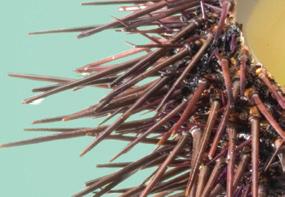


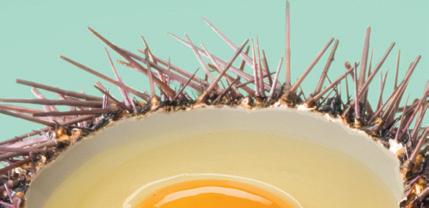












If you’ve ever eaten in Gastown, you’re probably familiar with one of Mark Brand’s properties, be it Sea Monstr Sushi, The Diamond, Save-on-Meats, et al. Now, Brand has partnered with four others to open No. 1 Noodle House, a pop-up in the old Boneta space at 1 West Cordova Street. The concept is as simple as can be: ramen, lots of ramen—and maybe some banh mi, chicken wings, spring rolls and beer.

The dark wood seating and large mirrors of Boneta are gone, to be replaced with a minimalist white aesthetic splashed with swaths of red. Cork-topped picnic tables are lined with white wood benches and some leftover leather banquet seating. Condiments, paper-wrapped chopsticks and lots of soup spoons grace each table, along with classic diner napkin holders. And if the casual ethos isn’t clear enough, the large “Cash Only” sign at the front, and the pinball machines at the back, send the message loud and clear.
It’s also going to be an industry favourite, since the kitchen remains open until four a.m. on weekends, and at least until one or two a.m. other nights. Hungry chefs coming off a long shift in the wee hours usually have few dining options, so No.1 will definitely fill the gap

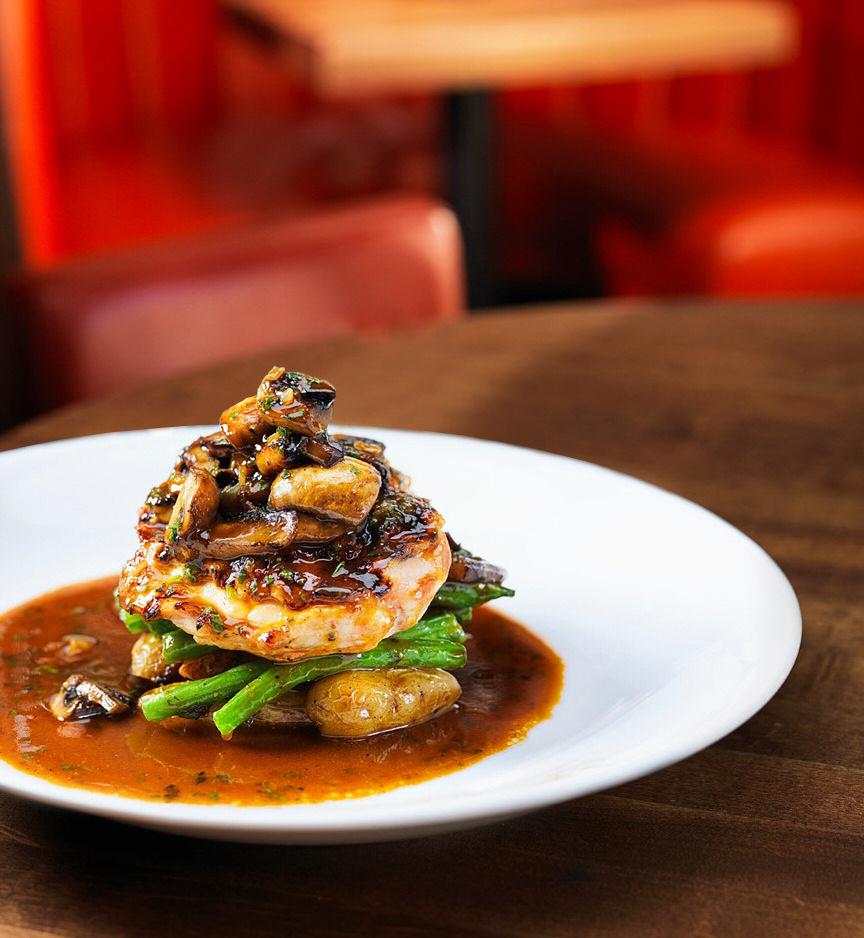
The menu might be short and simple, but simplistic it’s not. All the ramens, with the obvious exception of the vegetarian, come replete with chashu pork belly and slow-cooked egg. Noodles and broths are made from scratch in-house, and everything else is as local as possible. The No. 1 Black ($10.75), a pork stock with charred garlic and fresh ramen noodles, was large enough for three of us. Extra chashu and egg are $1 a piece, so it’s easy to get the proportions right for any number of sharesies.
The winner of the night was the plate of house chicken wings ($9.75). Deep-fried, sticky, salty, slightly spicy and very juicy, these were the real three-tip deal. No separated drumettes and wings here, it was a large heap of full-on skin, bone and meat goodness. That, a truly stellar G&T ($5 for a single), made for a delicious night.




left: Alix and Chris Harvey standing outside the Local General Store. right: The selection of grains available at the store.


Five years ago, Alix and Chris Harvey began researching and sourcing products to bring to the Local General Store, which opened its doors in May. The store was virtually conceived and ready to go with all products bookmarked and chosen long before the retired couple found their ideal location in Fernwood. Alix Harvey envisioned the Local General Store as a place where you could shop for local, organic groceries, pick up some environmentally friendly household needs and find a unique artisan gift all in one place.
When most people think of local, they tend to gravitate towards the 100 Mile Diet concept—but not in this case. Alix and Chris have expanded the perception of local beyond miles or geography. Their first choice are products within the shortest distance from the store, and so farms and pro ducers from Victoria, Vancouver Island and the Lower Mainland are given priority. They then research the quality and fair practices to produce it, and ensure it is environmentally sustainable. However, the term “local” for Alix and Chris means much more. “We now live in a globally interrelated environment,” they say on their website, “and only focusing on one’s own local well-being contradicts the spirit of interconnectedness that has emerged over this past century. ‘Local’ for us also means respecting and wishing the best for local communities all over the world.” Common products such as coffee or cotton that can’t be produced in our climate are sourced only through distributors that can assure a direct benefit back to their community, wherever in the world that may be.
Local area products include freshly prepared butter chicken and samosas made from all natural ingredients by Victoria-based chef Rekha Molleken. Family-run Island Bison from Black Creek, north of Courtenay, is another exceptional product: lean, free-range bison available in the form of patties, smokies, sausages and ground. Newcomer Tree Island Gourmet Yogurt is also from Courtenay and uses whole milk made from their grass-fed cows in the traditional kettle cooking production method.
A divine selection of quality preserves comes from Deaconvale Farms on Mayne Island, including chutneys, jams and relishes. And, depending on what day of the week you go, different baked goods are delivered fresh daily from local bakeries Moulin Vert, 2GF Kitchen, Wildfire, Il Forno di Claudio and Fry’s Red Fife Bakery. The schedule is u p on the store’s website, along with a comprehensive inventory of the unique products the couple are proud to promote and stock. Other products that fit the store’s definition of local have been brought in from the B.C. Interior, Eastern Canada, the Pacific Northwest and California.
Being an ethically conscience consumer certainly isn’t a new idea; however, shopping at a store that is could make all the difference for our communities and their long-term “local” sustainability.
BY SHERRI MARTIN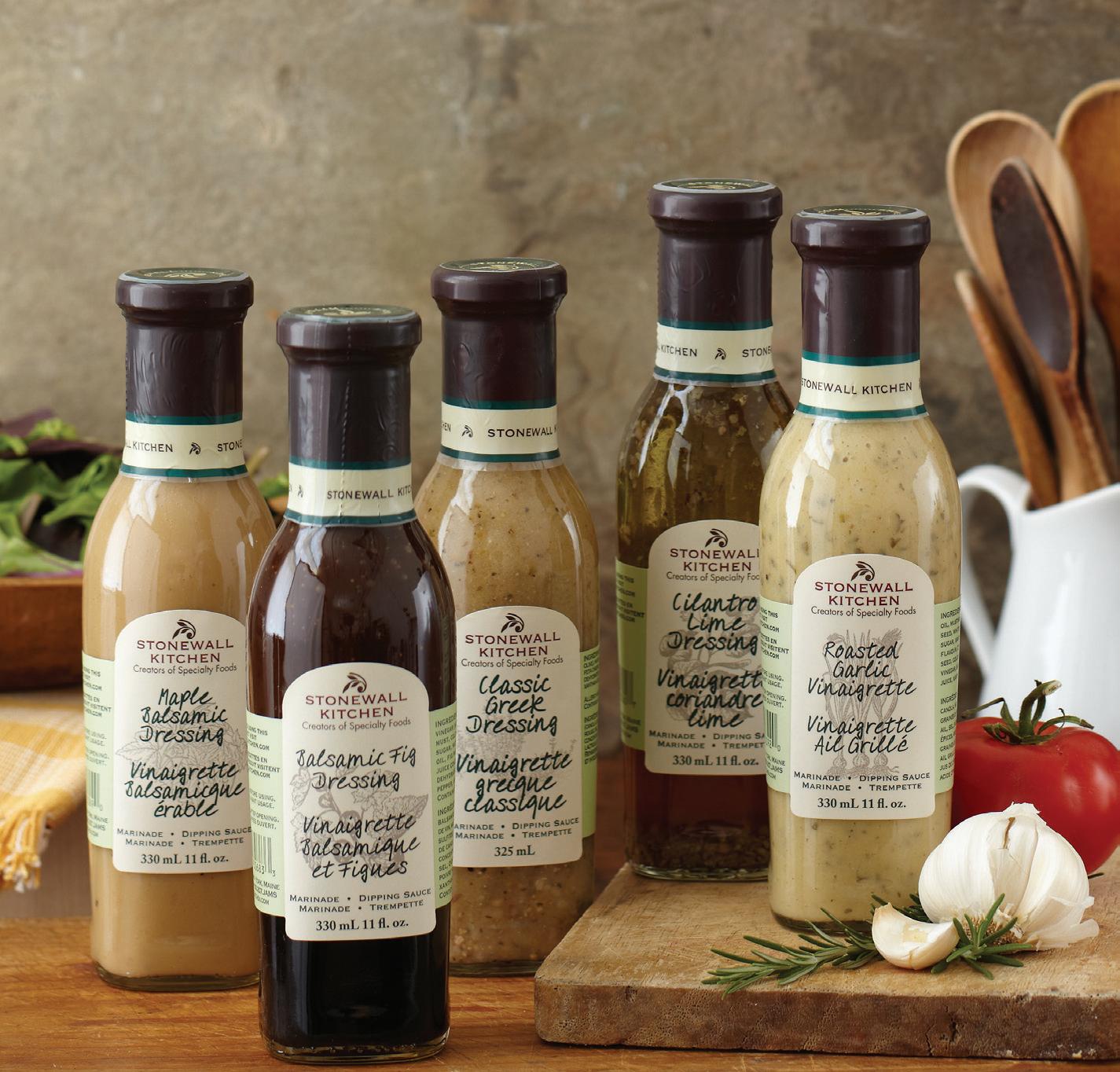


Ten years ago exactly I wrote my first column for EAT magazine. The column has always had a budget focus but has cycled through some different names, as have I! The first name was “The Ten Dollar Gourmet.” That got a little hard to sustain, so it turned into “The Budget Gourmet” and is now “Eating Well for Less.” And I changed my name from Elizabeth Smyth to Elizabeth Monk, taking my husband’s last name a mere five procrastinating years after getting married. To commemorate my first column, I am revisiting those first three restaurants.
Philippines Bayanihan Community Centre | 1709 Blanshard St. near Fisgard | 250-472-1898
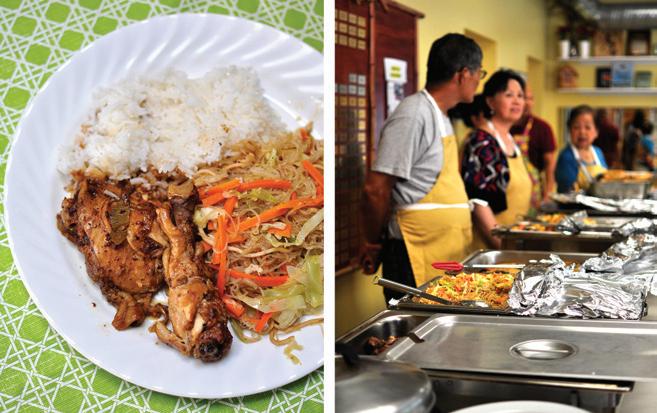
A decade ago, I enjoyed the fun, rambunctious Sunday lunch at this community centre, and this weekly event is still going strong today. The inflation is completely manageable—I got a platter of food then for $5; now it’s still a deal at $7. A different family or team each week puts on the meal, so you’ll get different family recipes each time you go. Your platter starts with rice and/or noodles. I need to note that these aren’t just any noodles. Filipino noodles are boiled in chicken stock, imbuing them with lots of flavour, then mixed with shredded cabbage, carrots and seasonings, making a tasty meal in itself. Then you get to choose two other dishes. On our visit, the choices were varied. Ginataang Gulay is a delicious mix of squash and green beans in a coconut-ginger sauce. The visually stunning eggplant omelette is a lengthwise slice of eggplant dipped in egg and chopped red pepper. The fried fish of the day, salmon, was seasoned with the clearly international favourite of lemon and onion. And the Lechon Paksiw, roast pork simmered in vinegar, sugar and bay leaf, is accompanied by a sauce spiked with liver.
This dish brings up a humorous similarity to my first visit 10 years ago. When I wanted to try the Dinuguan, a blood pudding, the woman I was speaking to said, with complete kindness as her intention, “White people usually don’t like it.” This time I got more of an apology: the woman grimaced sadly when she said, “It’s pork in, well, liver sauce.” Bring it on, I say.
Brasserie L'école | 1715 Government St. | 250.475.6260 | lecole.ca
Yes, believe it or not, 10 years ago I was able to cobble together a meal at Brasserie L'école for $10. I had a rich, filling onion soup with bread for $6, and a vegetable side dish for $4. While everything I’ve had at Brasserie is fair value for the quality, we’re looking at a minimum of more like $15 now. The French onion soup at $9 is still large and rich, served in a sensuous bowl with cheese billowing over the top. I break through the layer of bread and Gruyère with the same joy I have cracking the top of a crème brûlée. Testament to Brasserie’s attention to detail is the fact that the bread and cheese layer breaks open easily—there’s no desperate stabbing and sawing at an impenetrable barrier, as with some French onion soups. The side dishes the day I went were cremini mushrooms in Pernod butter and also chard, almonds and sultanas, each for $6. The mushrooms came in a bath of buttery sauce, perfect for dipping bread in, and the chard was elegant in its simplicity, clean and unadulterated, with the flavours speaking for themselves. An interesting addition was beef croquettes for $1.50 each, a silky stew of beef encased in a choux paste typically used for éclairs, which is then breaded and deep-fried. So, while you’d usually go to Brasserie to enjoy a sumptuous meal, you can in fact also manage a wonderful meal for $15.
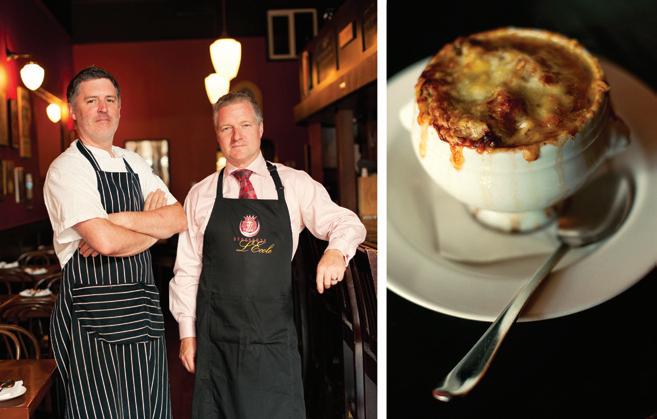

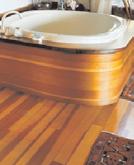












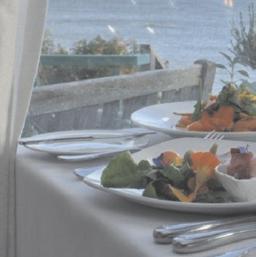



Imagine my consternation when I learned that my go-to place for calamari, Passero’s Restaurant, soon to be Ithaca Restaurant, is changing ownership and name, right when I’m doing a 10-year anniversary review, no less. However, I have learned that as much is the same as is different. For starters, former owner and chef Yanoula is staying on as chef. The signature roast lamb dish with lemony roast potatoes that I raved about in my first-ever column remains intact—phew! Ten years ago, I was crafty and
unashamed about hitting the early-bird special, scoring a lamb dinner for 10 bucks. These days, to keep my bill under my new rough guideline of $13, I am focusing on the lunch men u, where lunch specials are as low as $7. A classic from a decade ago remains on the menu—avgolemono soup. This lemony chicken soup with orzo is creamy and robust; a bowl goes for $4, and a side of warm pita is $1.25. Also traditional for Passero’s is the focus on kalamari. It was always excellent, and it has now been kicked up with just a little more salt and lemon, making it irresistible. The kalama ri tray is a good way to try a few things if you can share it with another person. For $20, you get a mound of tender kalamari, garlicky tzatziki and hummus, and soft, housemade pita triangles. Encircling these are thick chunks of tomato and cucumber sprinkled with fresh oregano. The new menu highlights pork. One example is the tender and flavourful pork souvlaki lunch. The rice that comes with it and other dishes has a deep lemon flavour and is delicious. The new Ithaca Restaurant, in transition from the name Passero’s, has a go-for-it attitude around seasonings. The taste of raw garlic definitely comes through in the sauces, and the rice and other foods zing with lemon. (That said, they do have a garlic-free chicken wrap in acknowledgement of the number of dentists who work at the medical building next door and may need to be careful!). The new décor could use a decorator’s touch, and I miss the plants that defined smaller spaces at the old Passero’s, but Ithaca Restaurant is definitely offering quality food. In fact, it’s worth mentioning that the new owners used to run The Plaza in Kenora, Ontario, which was written up for many years running in the famous Where to Eat in Canada. Now we in Victoria get to enjoy some of that same classic Greek food.

KITCHEN

Casual, yet still stylish: consider the baking tray! A sheet pan is no longer just for baking. Try it as mixing bowl, roasting pan and yes, serving dish too. Fashion meets function!
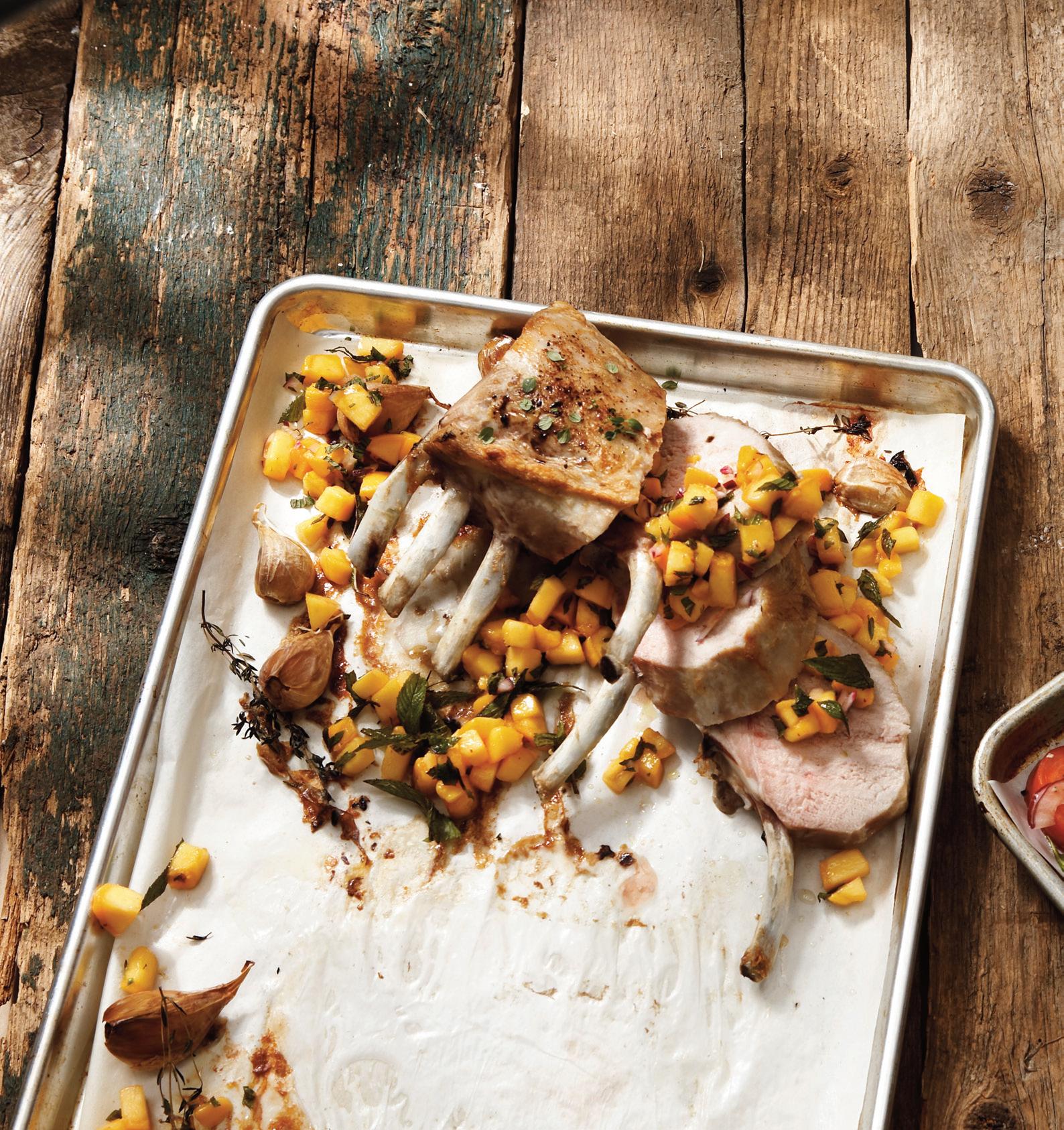
yum! late summer peach salsa
Peel and chop a few peaches. Toss with minced red onion and chopped mint leaves. Squeeze in fresh lemon juice, a drizzle of olive oil and pinches of sea salt and chili flakes.
In a stockpot, boil 2 cups water with 1 cup kosher salt, 4 smashed garlic cloves, a handful of peppercorns, thyme and rosemary sprigs and a thick strip of orange peel. Cool, then stir in 6 cups cold water. Add two, 6-rib pork racks. Top up with more water (if needed) so meat is covered. Refrigerate 12 hours or overnight. Drain and pat meat dry. Brush with olive oil and place on a baking sheet lined with parchment paper. Scatter a few whole garlic cloves and thyme sprigs around racks. Roast in preheated 475F oven for 15 min; reduce heat to 300F and cook until pork reaches 155F, 40 to 50 min. Let stand 15 min, t hen slice into chops.
Mix an assortment of heirloom tomatoes with slivers of red onion, black olives, capers, handfuls of arugula mixed with basil leaves and pieces of torn buffalo mozzarella and crusty day old bread. Generously season with sea salt. Drizzle with aged balsamic vinegar and olive oil. Toss to mix. Let stand 10 minutes before serving.
heirloom tomato & bread salad

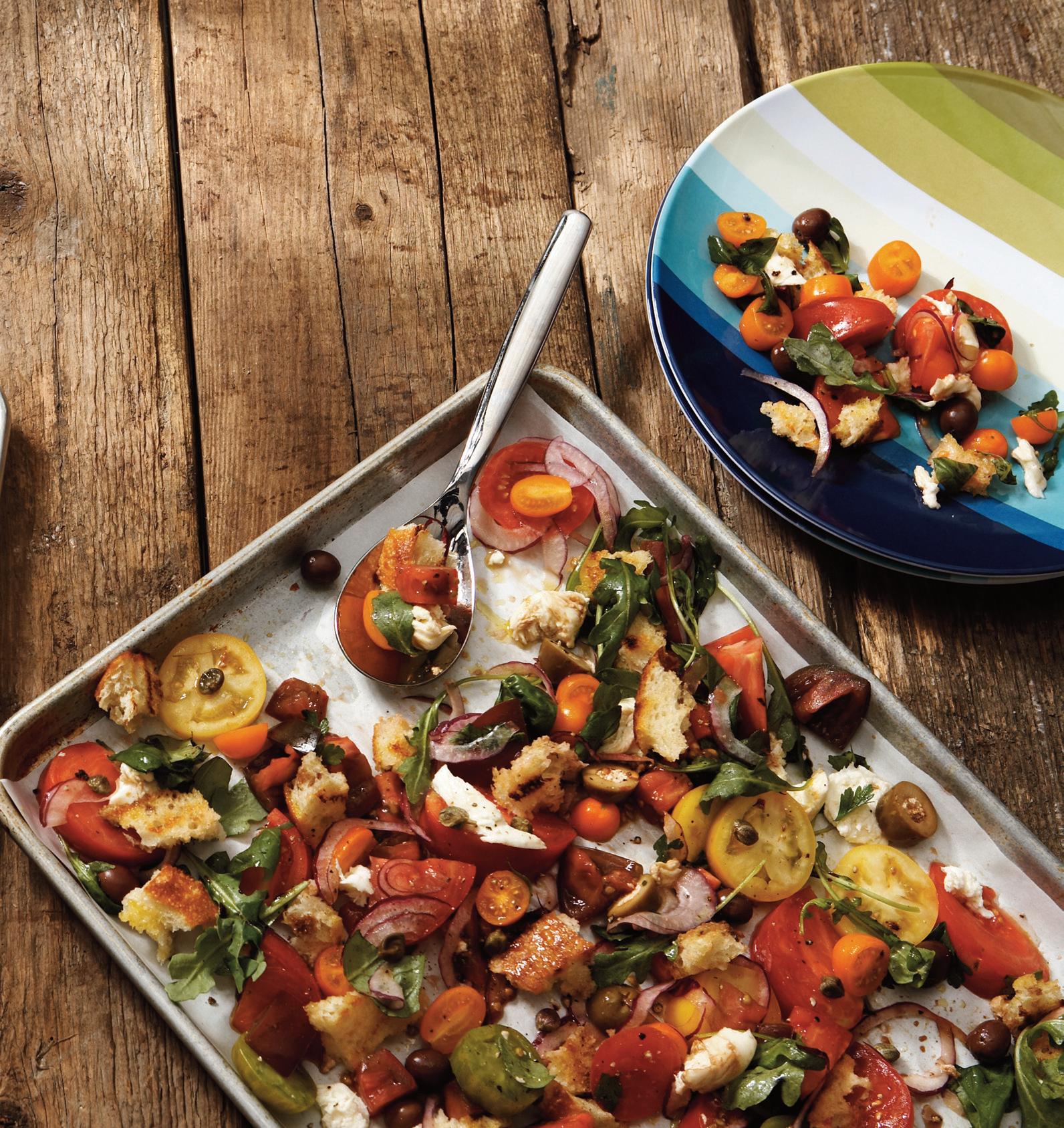
brined rack of pork
Grill bread for a smoky flavour.

Swap out berries for chopped apples and pears.

Roll out a 375 g pkg of puff pastry into a large circle. Place on a baking sheet lined with parchment paper. Toss 2 cups each black berries and blueberries with ½ cup sugar, 1 tsp grated lemon peel, 3 Tbsp flour and pinches of sea salt and nutmeg.
Scatter over pastry, leaving a broad border. Combine ¼ cup chopped lmonds with 3 Tbsp each brown sugar, flour and melted butter. Squeeze into blobs, then sprinkle over fruit. Bring edges of pastry up over fruit, covering about 1/3. Brush pastry with milk.
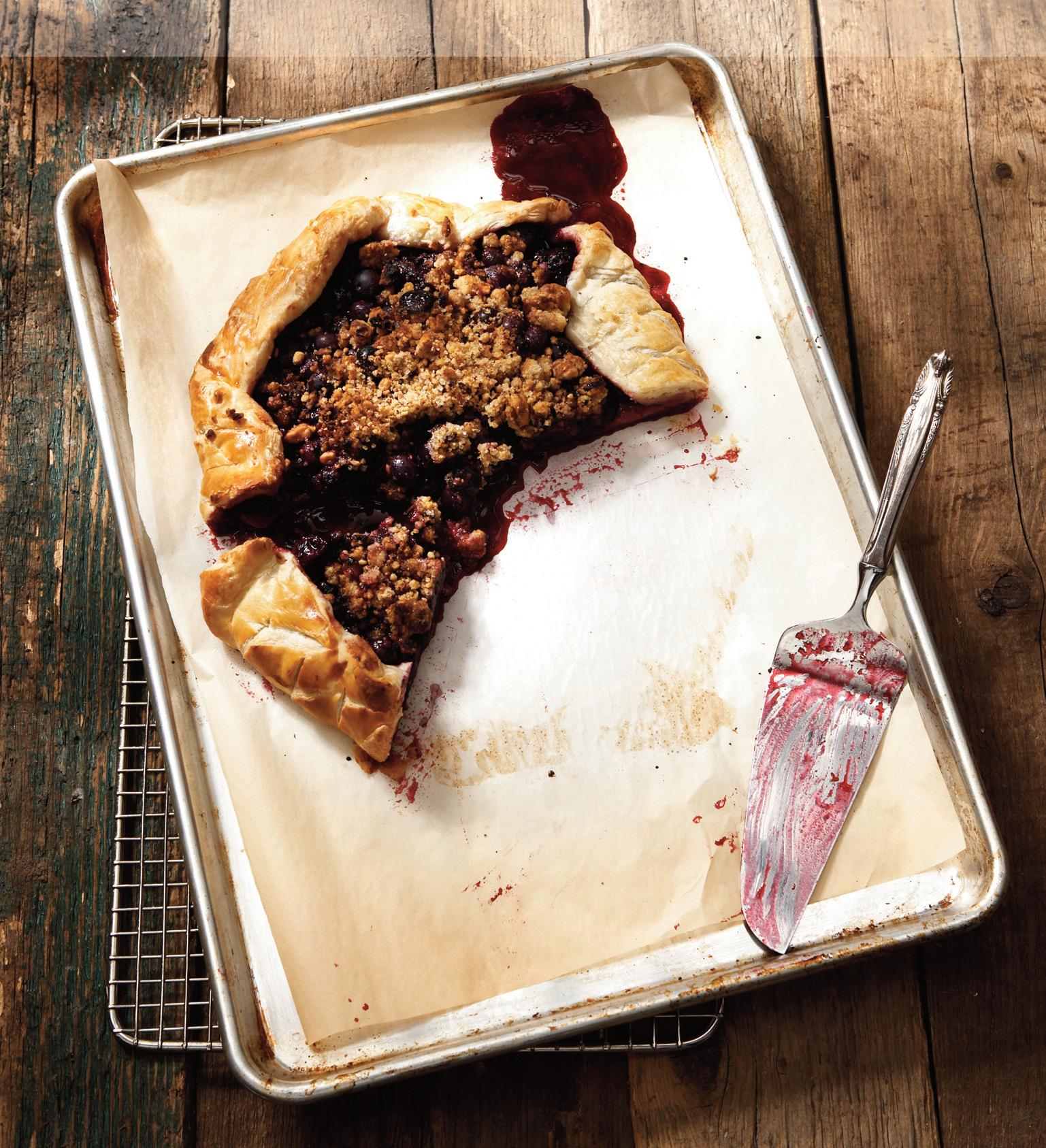
Bake in preheated 400F oven until pastry is golden and berries start to burst, 20 to 30 minutes. Cover centre with foil if topping starts to burn.
Recipes and food styling by JENNIFER DANTER
Photography by MICHAEL TOURIGNY
Art Direction by GARY HYNES



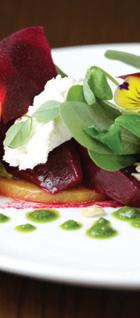


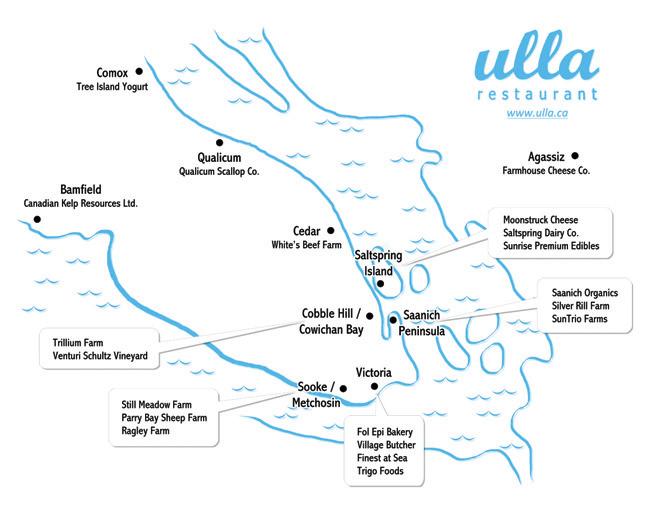






























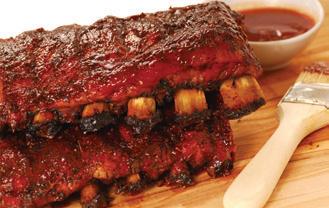

“We were tired of crappy doughnuts in Victoria,” says Noah Warder, co-owner/operator of Doughboys with Luke Robert. “We’re from the Prairies, where there is always an amazing Dutch or German bakery [offering delicious doughnuts].”
It’s a sunny Wednesday at the Hudson Market and I pick up a Red Baron and a Banana Butterscotch doughnut. The Red Baron is baked with fresh strawberries from Mitchell Bros. Farm. The flour is milled in Cowichan Bay at True Grain Mill. It’s a mix of sweet, fresh strawberries and dense cake-style doughnut (they also do brioche-style); sticky, tasty, even refreshing. The Banana Butterscotch doughnut is vegan. It is coffee-dip-able banana bread with a mild but rich butterscotch glaze; nice and reasonably light. Doughboys is deeply committed to local, in-season ingredients and also to providing sumptuous gluten-free and vegan options; beautiful and smart. Plus, I hear their apple fritter is incredible.
In the next leg of this trend-exploring doughnut crawl, my friend and I run (yes, run) from Cook Street Village to Mortiscycle Donuts at The Superior. Lisa Bohème, the owner of this supper club, commands the espresso machine outside. Six cake covers line the bar; the plates are empty save for two doughnuts and a smattering of crumbs. “They go fast,” she beams. “More are on the way.” Isaac Hordiyuk, 16, strums some easy listening riffs while we tuck into our 2% Jazz drinks, one maple-walnut doughnut and one chocolatepeanut. These two are cake-style, faster to produce and more dense than the yeast-raised treats they also offer. Lisa and Kevin Hernandez (the pastry chef and Lisa’s husband) created Mortiscycle in memory of doughnut stands of years past when they lived in southern California. The maple-walnut is delicious, my favourite of the two. This classic combination provides a sound complement to my cappuccino. They were out of the Mortis, a roasted banana cream/chocolate amaretto and Burnout, a lemon curd donut with a meringue top. We could have stayed there for hours sampling and listening to the music.
Next, we run to Discovery Coffee on Discovery Street to sample Yonni’s Doughnuts. Earl Grey Cream, Boston Cream, Coffee Toffee, Spicy Caramel Pecan, Apple Fritter and
two coffees, please. Placing that order, swathed in sweat from our run, is a guilt-free delight. Yonni’s Doughnuts are made at Discovery Coffee on Menzies. Logan Gray, one of the owners, grew up in Victoria and waxes poetic about the glazed doughnuts at the now-deserted Ian’s, a classic diner adjacent to the Jubilee Hospital. “People turn into kids when they see these doughnuts. It is great seeing people having a great coffee, but the doughnut is added fun.” Logan Gray and pastry chef Melanie Laverick collaborate on the recipes, exploring both the sweet and the savoury. The doughnuts we sample are all yeast-raised, but they also make them cake and brioche-stylecake. The Earl Grey Cream is wonderful, the aromatic cream unusual and scrumptious. But the Spicy Caramel Pecan took the “doughnut.” Salty, spicy and sweet, it lures in the taste buds with the salt and sweet, and then the cayenne takes hold as you bite into this caramel-coated treasure. The pecan is a lucky nut; it has never been killed by overuse. This is my showstopper doughnut.
So why doughnuts? Are they the sweet answer to a current trend for lushly flavour, high-fat food? Possibly. At any rate, we did not run home from Discovery. We walked, rather slowly, with big fat smiles on our faces. —Gillie
 Easdon
Easdon
At the time of writing, Doughboys are at Moss Street Market, Saturday 10-2; Hudson Market, Wednesday 11-3; Oaklands Sunset Markets, every other Wednesday 4:30-8:30; and Fairfield Market, every Wednesday. They are featured at Heist Coffee Co., 727 Courtney St.; and Picnic 1 & 2, 506 Fort St., They are also planning to open in The Husdon in September. facebook.com/doughboysdonuts.vic
Mortiscycle Donuts are at 2% Jazz locations and also at The Superior, 106 Superior St., 8 a.m., Tuesday-Sunday, “but not if it is rainy or too windy,” until they are out. thesuperior.ca/mortiscycle.
Yonni’s Doughnuts are at Discovery Coffee locations and the Discovery Coffee truck festival locations, discoverycoffee.com/category/bakery
Oregon’s increasing culinary cornucopia includes the elusive and expensive truffle. Editor Gary Hynes visits the Oregon Truffle Festival to uncover its secrets

In my fridge, there’s a large Mason jar filled with a handful of fresh, white, Oregon truffles, five in-their-shell eggs and a half-pound of butter. The truffles are the booty from a morning spent foraging in the Oregon woods.
I’ll leave the jar in the fridge for about five days, until the eggs and butter have been infused with the aroma of the truffles. Already, when I unscrew the lid and take a small sniff, the jar gives off a pungency of earthiness, “forest floor,” musk, nuts, cedar and hints of cinnamon, nutmeg and vanilla. I’m excited by the complex and fragrant aromas and can’t wait for the eggs and butter to be fully flavoured and ready to be used in cooking. Meanwhile …
After following meandering country roads past small farms and wineries, we assembled beside an overgrown Christmas tree farm in rural Oregon. It was the second day of the Oregon Truffle Festival and our small group was standing on a muddy track shivering in the winter mist and waiting for the hunt to begin. “I hope we find some,” said the guy standing beside me. “I heard there was a group out here yesterday and they cleaned out the area.” My truffle mate was from Seattle, a tech professional who has hunted truffles many times before. Me, I’m a newbie, here to learn as much as I can and find a truffle or two. Our guides handed out small rakes, gloves and cloth bags. We were being led by three guides who had their truffle-sniffing dogs with them. Everyone wa s eager to get started. “When we get going,” said a guide, “head to the northwest area at the top of the slope—it hasn’t been picked over yet.” The Seattle guy looked relieved. With a hand gesture from the guides, the dogs moved off through the dark Douglas fir forest, their noses close to the ground sniffing every inch of the forest floor. Occasionally a dog stopped and took a momentary interest in a spot before racing off when no truffle was detected. Meanwhile, the guides moved quickly to keep up with the fast-moving animals, and we scrambled in the rear, also trying to keep up. Suddenly, one of the dogs began pawing at the ground, and his handler jumped in to move the dog out of way before it could get at the prize. The guide carefully removed the duff (the decaying leaves and branches) and to p layer of earth, revealing five thumb-sized Oregon white truffles (Tuber oregonense). To me, they looked like tiny, misshapen potatoes. Everyone crowded in for a look as the guide showed us what a ripe truffle looks like.

“Look for truffles that are firm, not spongy, and with no insect holes,” he said, “and look for ones that have that unmistakable truffle scent.” We took turns smelling the freshly du g-out truffles. I’ve had truffles before in restaurants—some very, very good—but they’ve always been part of a dish. Once, in Paris, my wife and I bought a French black truffle on the rue du Faubourg St. Honoré. We had no kitchen, so we went into a minuscule back alley bistro, broke off pieces of our truffle and sprinkled them over an omelette (the warm egg dish seemed to help release the truffle arom a). But this was the first time I’d been up close and personal with a truffle just pulled from the dirt. It was my aha moment and I was in love. As the day continued, we got the hang of the hunt. Our bags began to fill with truffles as the dogs and our soon-to-be-aching backs got plenty of use.
Such hands-on excursions have helped make the Oregon Truffle Festival one of the most exclusive gastrofests on this continent. Each January, truffists and their dogs, chefs, scientists, mycologists, truffle lovers and food journalists go to Eugene to eat, learn about, and take in the unique Oregon truffle culture.
Pre-Festival Day—let’s back up 72 hours (the Eugene airport): After taking two short flights from Victoria via Sea-Tac, I arrived in the winter darkness of an early Thursday evening. The sleepy airpor t was almost rolled up for the night. Eugene is a small city at the south end of the Willamette Valley, an agricultural area of small farms and vineyards specializing in bigger and riper reds than their cousins to the north. With truffles on my mind, I headed out from the Hilton Eugene (truffle command centre for the festival) to Marché, a 15-year-old restaurant run by James Beard award finalist Stephanie Pearl Kimmel, for the first of many truffle dinners and lunches to be held throughout the weekend. The festival will begin tomorrow, but local restaurants were in the spirit with many offering special truffle tasting menus.
My first dinner was a four-course prix-fixe that the server told me was inspired by the great French chef Auguste Escoffier. My first course was a classic velouté royale, an old school creamy soup made from a celery root stock thickened with butter and flour. In
the centre of the bowl was the royale, a delicate egg custard that had been infused with fresh white truffle (no chemical truffle oils here). It was creamy, delicate and rich. I spent as much time taking in the heady aroma as I did on the spoon work. Slow-roasted beef tenderloin topped with shaved black truffle and a beurre Colbert (a melted meat glaze with butter and tarragon) followed. Then came an endive and orange suprême with a soft-poached egg covered with a white truffle cream dressing. And for the pièce de résistance, a dessert of both black and white truffles baked into housemade macarons. Did the sugary fruitiness of the macarons marry well with musky truffles? It was definitely a daring and challengin g flavour combination, but it was also a bit weird— more brain teaser than stomach growl. Of the four dishes, I preferred the soup because it was the perfect foil for revealing the truffle aroma and flavour. [Take away lesson #1: Any dish with flavours too bold or too complicated will overwhelm truffles.]
Festival Day One (7:00 a.m., Hilton Eugene): The official start of the festival and, of course, it began with (you guessed it) truffle eating at breakfast: truffled whipped cream for the pancakes and bacon, washed down with black truffle hot chocolate or coffee. The festival runs three days and attendees choose from a range of experiences that include dinners, learning seminars, truffle dog training sessions, cooking classes, truffle hunts, visits to a truffle farm or truffière and local winery and lunch tours. All levels of interest are accommodated. Some just come for the food. Others are professional truffle guides and growers looking to expand their knowledge. For the next three days we would live, breathe and eat Oregon winter white and black truffles. “Not too hard to take in the dead of winter,” I thought as I took the last sip of my truffle-infused coffee and got ready for the full day ahead.
Cont’d on the next page
Finding and Harvesting One of the most sought-after seminars was given by truffle guru Dr. Charles Lefevre, a founder of the festival and a Eugene mycologist. We learned about the various types, where they are grown, how to find them, and how to inoculate tree roots so you can grow your own. I learned about Oregon winter white truffles, spring white truffles, Oregon black truffles, and even brown truffles —and that was just the local truffles. The reddish-brown pecan can be found in Texas, Georgia, Florida and New Mexico; of course, in Europe there are the famed and expensive Perigord black truffles (Tuber melanosporum) as well as the fragrant Piedmont white truffle. Truffles are also cultivated in Australia and found wild as far north as Quadra Island in B.C. But the vast concentration of truffles in Nort h America is found in Oregon. Finding them takes skill, networking and perseverance. The best and biggest command upwards of US$1,000 per kilo (Italian truffles can sell for US$6,000+ a kilo). Experts speculate no more than 100 kilos of black truffles are harvested in a good year in Oregon. Until recently, according to Dr. Lefevre, most Oregon truffles were found using the heavy-handed rake method. Foragers went into the woods and used long rakes to dig up the ground. This method resulted in too much disturbance of the forest floor ecosystems, harvested many unripe truffles and was no guarantee of finding high quality truffles. It was not unusual to find a 10-acre section of forest completely raked over and the ecosystem left in poor shape. [Take away lesson #2: Truffles harvested too early have no a roma, which pisses off chefs and consumers.]
Now dogs are the method of choice. Dogs will hunt for only ripe truffles, resulting is less damage to the natural habitat, higher efficiency and a better financial return for foragers. At the festival’s two-day truffle dog training seminar, the first event of its kind in North America, dog owners observed the handling and training of skilled truffle dogs and lea rned how to teach their own dogs to detect the scent of truffles. Among the many dogs at the festival, the Lagotto Romagnolo breed—a predecessor of the standard poodle—is the most prized. Bred in Italy, they’ve been used for centuries to find truffles. In 2007, the first Lagotto Romagnolo was brought over to the U.S. by Jim Sanford, a trainer at the luxurious, 4,200-acre Blackberry Farm in Tennessee. [Take-away lesson #3: A good hunting dog is the best way to find a truffle.]
The Cooking Class (afternoon): After the seminar, the more culinary-inclined headed off to cooking classes. I joined a bus full of hungry truffle lovers from California, New Mexico, Tennessee, Oregon and Washington to take in a cooking demonstration given by chef Robin Jackson from Sooke Harbour House and his sous, Toivo Heyduck. Jackson likes to source his ingredients from local farms and follows the Slow Food philosophy. He showed us how to make three dishes: fresh tagliatelli in Oregon black truffle cream sauce, braised Pacific octopus with truffles, and white truffles with grilled chicories. Jackson cooked with ease; the banter flowed, tidbits of truffle wisdom tossed out as the two-hour class time flew by. Each time Jackson fini shed a dish, we crowded around
taking pictures for posterity, popping our flashes and tweeting the moment. Said Jackson, “When cooking with truffle, I don’t like to cook anything too complicated to let the truffles shine through.” The class ended with a tasting of all three dishes (see his recipe for Fresh Tagliatelli in Oregon Black Truffle Cream Sauce at www.eatmagazine.ca). There were no small portion s and we ate our delicious fill.

Dinner (6 p.m): After a few hours rest, I was ready to eat again. Festival-goers divided up into smaller groups and headed out to nearby restaurants that featured trufflefilled menus. But before we left for our restaurants, we gathered for a glass of local bubble as we listened to a talk by noted California forager and advocate Connie Green, author of the book The Wild Table. Green talked about her 30 years supplying restaurants such as the French Laundry in the Napa Valley with truffles, wild edibles and wild mushrooms. It was fascinating to hear about the abundance of food that can be harvested from the wild and get an insider’s take on the famed Laundry.
Our group arrived at Belly, one of Eugene’s top new restaurants. The scene was lively and loud, the cooking farmhous e rustic. On the menu was gruyère and white truffle farm egg omelette, housemade herbed ricotta with truffle-steamed Jerusalem artichoke puree, and black truffle ice cream served with white pepper cookies and warm huckleberry compote. One of my table friends dashed back to his hotel to pick up a bottle of especially good champagne. We toasted him as he generously filled our glasses. By far, the omelette was the best dish of the
night, but the eggy black truffle ice cream was also excellent. Here the truffles worked with, rather than against, the sweetness of the dessert. [Take away lesson #3: Truffles have a natural affinity with eggs.]
Festival Day Two We spent the morning on the aforementioned truffle-foraging expedition, followed by a visit to Silvan Ridge Winery and a four-course wine luncheon. Ned Ludd, who operates Ned Ludd, a wood-fired restaurant in Portland, and Shiloh Ficek of Red Hills Market in Dundee, prepared the food out on the winery’s crush pad. We ate white truffles shaved over truffled liver mousse on nicely charred wood-fired crostini; a winter salad of red beet, grapefruit and frisee spiked with whitetruffle infused goat cheese; and a traditional Italian pork coppa sandwich gener ously slathered with quince jam and stuffed with a black truffle cabbage slaw and heaping shavings of black truffles. “Have we reached truffle overload yet?” we were asked. “Not on your life!” we shouted back. Actually, it was more of a murmur, but my brain was getting somewhat blurred from generous pours of Roussanne and Syrah. Dessert was a truffled pear crostata with black truffle crème anglais and candied walnuts. Completely satiated, I sank into a blissful stupor from the abundance of fresh truffles, wine and wonderful food. Is it any wonder that many of us nodded off on the bus back to Eugene? [Take away lesson #4: No matter how much truffle you eat, you want more.]
Incredibly, after a short turn in bed back at the hotel, I felt refreshed and ready for the top-billed Grand Truffle Dinner. This is the festival’s big ticket, and I was looking forward to a glamorous night and a five-course dinner cooked by top chefs from Portland, San Francisco and Eugene. Set-up at the front of the room was a long staging table where, in full view of the guests, the chefs plated their dishes as servers lined up to ferry them to us. The sparkling wine flowed, a band played and the hotel ballroom glittered with light and anticipation.
Each year the invited chefs change, but the mission remains the same—wow the crowd with sophisticated cooking that shows off Oregon truffles. This year, Nick Balla from hot Mission-area restaurant Bar Tartine was up from San Francisco, along with Rocky Maselli from A16, famed for its pizza and southern Italian cuisine. They were joined by Elias Cairo of Olympic Provisions, a Portlan d salumeria noted for its incredible cured meats; Greg and Gabrielle Denton’s Argentine grill Ox, also in Portland; and Eugene’s own Tobi Sovak of Noisette Pastry Kitchen. We began with a charcuterie tasting. Cairo worked his magic, adding both white and black truffles to saucisson d’Arles, rillettes, liver mousse, jamon and mortadella. I was in meat heaven. Next up, Balla showed why he cooks at one of S F’s hottest restaurants with his take on Pacific Northwest cuisine that has a deep sensitivity to the ingredients. A large, wide-brimmed bowl arrived containing gently poached sablefish and kabocha squash in parsnip broth and finished with sunchoke oil. What set this dish apart was how well Balla managed to stay true to the ingredients while he balanced the delicate yet rich flavours and the truffles. Major pleasure. This was followed by a salad of grilled escarole and fresh
Finishing a platter of Braised Pacific Octopus with Oregon White Truffles at the cooking class. Gary Hynesburrata with black truffle vinaigrette. The main protein course paired the Dentons’ cocoa-braised veal cheek with a white bean and spinach ragout, aromatic white truffles and a truffle-infused duck egg sabayon—a testament to the creative and stylish flavours found at their Ox Restaurant. The evening ended with Sovak presenting black truffle chocolate truffle and hazelnut dacquoise with blood orange olive oil. Mission accomplished. Five courses of sophisticated cooking with truffles that surprised and wowed. [Take away lesson #5: See take away lesson #4.]
Festival Day Three There was one final treat before guests headed back home. The glitz and glamour from the previous evening had been cleared away and in its place an impromptu market had been set up. Wandering around the room, it was amazing to se e so many food products from the area on display—from truffle butter and local cheeses to artisan chocolates and pickles to seafood from the coast and Oregon olive oil. What did I take away from the Oregon Truffle Festival? Three days immersed in Oregon food and wine culture; numerous good eats; and more than my fill of fresh truffles prepared by creative and accomplished chefs. I met like-minded foo d lovers and culinary professionals from all over the continent and had an exciting, hands-on experience that I will always remember.

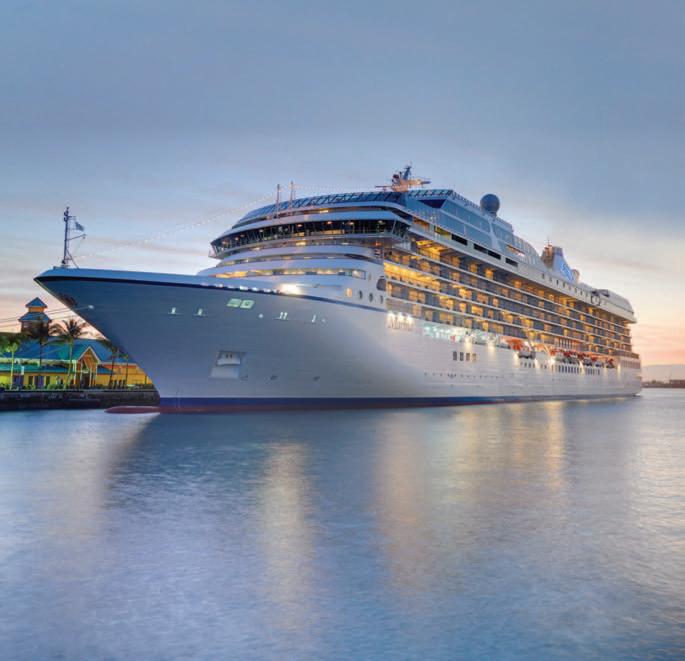
Five days later… I take the precious Mason jar out of the fridge, crack the now truffle-infused eggs into a bowl and give them a good whisking. White truffles have intense aromatic properties and are often used to infuse and perfume foods like eggs, cheese, cream and but ter. I melt a tablespoon of the truffled butter in a pan over low heat and tip in the eggs. A grating of Comté cheese and some diced cooked asparagus on top and it is ready. I put the lid on and patiently wait for the frittata to cook. When cooked, I remove the frittata to a plate, shave all of my one black truffle I brought back from the fesitval over the frittata, open a bottle of Oregon pinot gris a nd sit down and eat, completing my truffle-to-plate journey.
The 9th Annual Oregon Truffle Festival runs January 24-26, 2014. Tickets and more information are available at www.oregontrufflefestival.com.
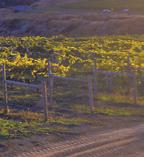

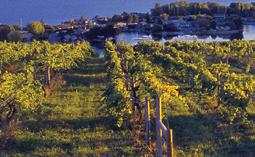



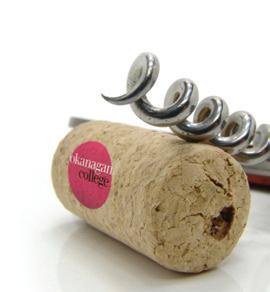

























EAT Magazine is available thanks to the support of our advertisers. Please support them whenever you can

Origin Bakery now has a second location in west shore! Their tasty selection of exclusively gluten-free goods includes not only breads, but cakes, pastries, lunch items and more. This is gluten-free everyone can love.
110-1790 Island Highway (by Wale Road), Colwood 250-590-8948, www.originbakery.com
Organic Fair is proud to be Vancouver Island’s first beanto-bar chocolate maker. We source extraordinary organic and fair trade cacao beans and transform the beans into chocolate with terroir.


(888) 223 2770
Organicfair.com
Fine dining in a beautifully restored heritage home. Local farm fresh ingredients, classic techniques and modern presentation are just a few reasons Chef Dan Hudson is creating a buzz. Lunch, Brunch, Dinner. Ph:250-597-0066, www.HudsonsOnFirst.ca
Discover what makes us quintessentially Salt Spring. Meet the owner; perhaps she'll be baking the pastries that fill the cafe menus. Stay for a coffee, grab breakfast or enjoy some lunch.
325 Fernwood Road, Salt Spring Island

250-931-2233 www.fernwoodcafe.com


Country House Hotel with elegant accommodations and island ambience, spectacular views, romantic fine dining crafted to perfection, and spa treatments for relaxation and bliss. We are now open all winter and feature affordable packages and seasonal rates.
250-537-2362
Hastingshouse.com

Spring is in full swing and what better way to celebrate it than with a B.C. cheese made with the finest raw milk from cows grazing on richly green, rapidly growing grass. Behold Alpindon, an aged cheese made by Kootenay Meadows, a family of organic cheese makers in Creston, B.C.
Alpindon takes the definition of a “farmstead cheese” to a whole new level. Not only does Kootenay Meadows use the milk from their own dairy cows to make the cheese, they grow their own feed as well.
“It’s a concentrated expression of our farm and the land that we love,” explained Nadine Harris Ben-Rabha, cheese maker and sales and office manager at Kootenay Meadows. “We raise everything on our farm directly from the soil.”
Alpindon is a seasonal alpine-style cheese typical of those made in France’s Savoie region. The spring and summer milk used to make the cheese is exclusively grass-fed, raw and organic, resulting in a high quality, nutrient-dense product, and a complex flavour profile. Similar to Gruyère, Comté or Beaufort, Alpindon is aged a minimum of six months, which builds a bold taste and complex flavour profile.
“It’s feisty,” said Allison Spurrell, owner of Les Amis du Fromage. “I def initely think it’s strong and has its own opinion”. Its sweet, caramel beginning and complex, nutty finish seems to be pleasing the taste buds of several Vancouverites.
“We sell tons and tons and tons,” said Spurrell.
Spurrell suggests pairing Alpindon with spicy white wines like Viogniers, Gewurztraminers and Rieslings to complement its earthy taste. Although Spurrell and Harris Ben-Rabha agree that it is best eaten alone, slice by slice, it can be used in a variety of cooking applications. Try adding slivers to a salad, shaving it over grilled asparagus or incorporating it into potatoes gratin.
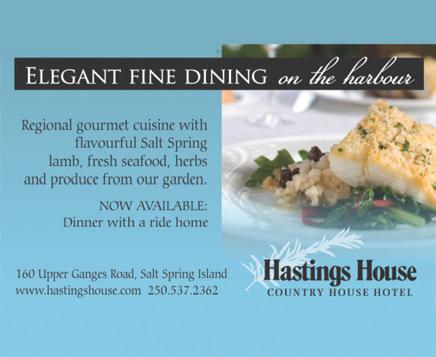
Alpindon is best enjoyed at this time of year, as the wheels that are currently being sold have been aging since last summer, resulting in a mature, developed flavour and delicious crystallization.
—Courtney Schwegel Kootenay Alpine Cheese Co., 3071 16th St., Creston B.C. kootenayalpinecheese.com
Starting a regional food hub in Victoria will be one of the key sessions at the Living the New Economy conference, a week of events from November 29 - December 5 focused on energizing and celebrating the people, institutions and collaborations that are pioneering a new economic movement. Co-hosted by The Healing Cities Institute and EcoDesign Resource Society, the week is dedicated to bringing this “new economy” to Vancouver Island and the Gulf Islands.
What is the “new economy” and what makes it different from the old one? The term emerged in the early 1980s and referred to the then-nascent movement away from heavy manufacturing and towards a more service-based economy. Thirty years later the concept has grown to embrace activities that bring the human economy into greater balance with the planet’s natural ecosystems. According to the event’s website, it is “a movement towards a more equitable economic arrangement for people and communities, including more collaborative and distributed forms of ownership and greater economic democracy” as well as building more economic, physical and social resilience into local economies and communities.
The site of the conference captures this ethos: the historic Roundhouse at Bayview Place, a new heritage development in the Songhees. The Victoria Community Food Hub Society, whose mission is to establish a food hub in the city, will present the session.
The idea of a regional food hub is far from a radical concept. It’s a practical way to support food security and the buy local-eat local philosophy. According to the Wallace Center, an Arlington, Virginia-b ased organization dedicated to building good food systems, a working definition of a regional food hub is “a business or organization that actively manages the aggregation, distribution, and marketing of source-identified food products primarily from local and regional producers for the purpose of strengthening producer capacity and access to wholesale, retail, and institutional markets.”

In other words, regional food hubs are far more than just farmers’ markets. They have a positive economic, social and environmental impact on communities and put local consumers in touch with local producers, filling an important gap in regional food systems.
The Victoria Community Food Hub Society, currently awaiting charitable status, is conducting feasibility studies and business plans to build a food hub in th e Capital Regional District’s core area. Included might be a 3,000-square-foot food-processing kitchen, large freezer and cooler space, shared office facilities and a food aggregation warehouse for food banks and local farmers. This facility will fill a clearly identified need in the community. The Victoria Foundation recently held a round table on food security and discovered a lack of any kind of large-scale commercial food processing facilities or cold storage within the CRD. This makes it difficult for farmers and other food producers to meet the demand for their food locally.
The intention of the community food hub session at the Living the New Economy conference is to present a preliminary draft business plan to key members of the community. Speakers will be from core food advocacy groups. Af ter presentations and the current food hub proposal, a mini-charette for the project will explore what the hub could and should include (a charette is an intensive and interactive design workshop). Between 30 and 50 people from the Victoria Community Food Hub Society network are expected to attend, and they in turn hope to invite another 30-50 key members of the public to offer input.
As of the first week of August, the Society has received $20,000 in funding from VanCity’s enviroFund to conduct a feasibility study and preliminary business plan. Project leader Jason Found, a Victoria sustainability consultant, has started work on this, with support and advice from Darren Stott of Vancouver-based Greenchain Consulting (New City Market and the Victoria Public Market). Several potential sites have been explored. The intention is to secure a long-term lease, establish the commercial production kitchen and then begin a capital campaign to purchase the building.
Other food-related topics taking place at the New Economy conference include launching a provincial permaculture network and exploring succession planning for farmers. To see a draft program of Living the New Economy’s confirmed speakers and workshops, and to register, visit neweconomy.ca or call Nicole Moan at 250-888-7795 or 250-686-3720.
Individual sessions will range from $10-$35; a week’s pass is $295.



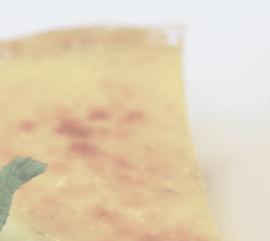
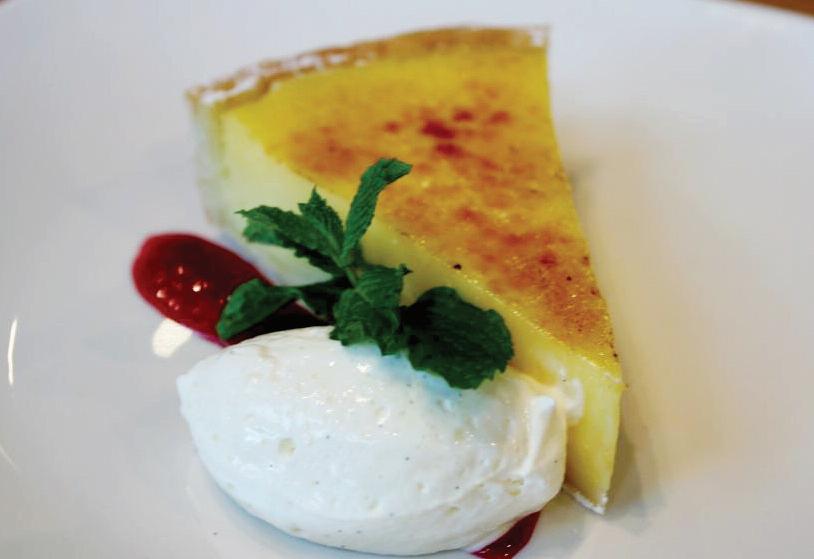
Cabernet Sauvignon is often heralded as the King of Grapes, a cloak that this classic variety wears confidently. Thick skinned, full bodied and tannic, this black grape’s signature structure and flavours are recognizable across geographic and geological boundaries. Black is in. Blackcurrant, black cherry and blackberry are hallmark fruits, with eucalyptus, mint and black olive notes emerging in warmer climes and cedar, tobacco leaf and green pepper edging through in cooler regions. Leather, cigar and graphite gain intensity with maturity. As you might have noticed by its name, this regal grape is the heir of some major players in the viti world: Cabernet Franc and Sauvignon Blanc. Firmly at home in Bordeaux, especially the gravel-dominant Left Bank, you’ll usually see Cab Sauv blended with Merlot (adds plumpness and fruit) and Cabernet Franc (adds peppered perfume finesse), though it welcomes blending with other black grapes in France and elsewhere. Cab Sauv plays very well with Shiraz in Australia, and Sangiovese in Tuscany, for example.
But it’s really all about the bones. When evaluating reds in a blind tasting, I’m seeking structure if Cab is on the table. Young Cab Sauv can be like a brand new dining chair: a bit too tightly strung and austere, uncomfortable for more than a short period of time - or worse - more than one glass. When worn in with a little time however, the diner is rewarded. Edges soften, wood relaxes and stiff leather transitions into saddle, allowing you to sink right in. Your dining chair has become a throne – certainly one fit for a king.
Cabernet Sauvignon, Menzies Vineyard, The Cigar 2009
ORIGIN: Coonawarra, South Australia, Australia
THE WALLET: $25-28
ALCOHOL: 14.5%% abv
TASTE: Layers of savoury textured goodness to unwrap over time – iron, herbed bramble, tobacco, cassis, red cherry, fragrant red floral notes – neatly bound with fine grained tannins and elegant freshness.
Zapata
Alamos Cabernet Sauvignon 2011
ORIGIN: Mendoza, Argentina
THE WALLET: $15-18
ALCOHOL: 13.5% abv
TASTE: Sweet sausage and sun ripened cassis lead into deep dark perfumed black fruit - ripe, juicy and supple. Anise and dark cocoa with a cloud of light smoke on the finish. Ready to drink, suitable for all.
Paul Hobbs Cross Barn
Cabernet Sauvignon 2010
ORIGIN: Napa Valley, California, USA
THE WALLET: $56-60
ALCOHOL: 14.2% abv
TASTE: Ripe and expansive cassis, black cherry and baked blackberries lushly cover this well structured Napa cab. A juicy, plumy acidity and fragrant, confected anise note on the lengthy finish add interest.
Chateau
Roquetaillade
La Grange 2009
ORIGIN: AC Graves, Bordeaux, France
THE WALLET: $26-30
ALCOHOL: 13% abv
TASTE: Old school and owns it. Gravel and smoked barrel on first whiff, then stony mineral, fresh red cherry, tobacco leaf and white pepper. Structured tannins are firm enough to remind you this is Bordeaux, mais oui, though amiable enough to easily finish the bottle (perfect 13% alcohol).
Passion Pit Cabernet Sauvignon 2010
ORIGIN: Similkameen Valley, BC, Canada
THE WALLET: *$29-33
ALCOHOL: 14.3% abv
TASTE: Hits of dusty cassis, espresso and sweet fig newtons lead to a juicy and full palate of wild strawberry, black raspberry, dark wildflowers and savoury figs – all layered overtop a toasty woodiness. Great length.
O. Fournier
Urban Cabernet Sauvignon 2009
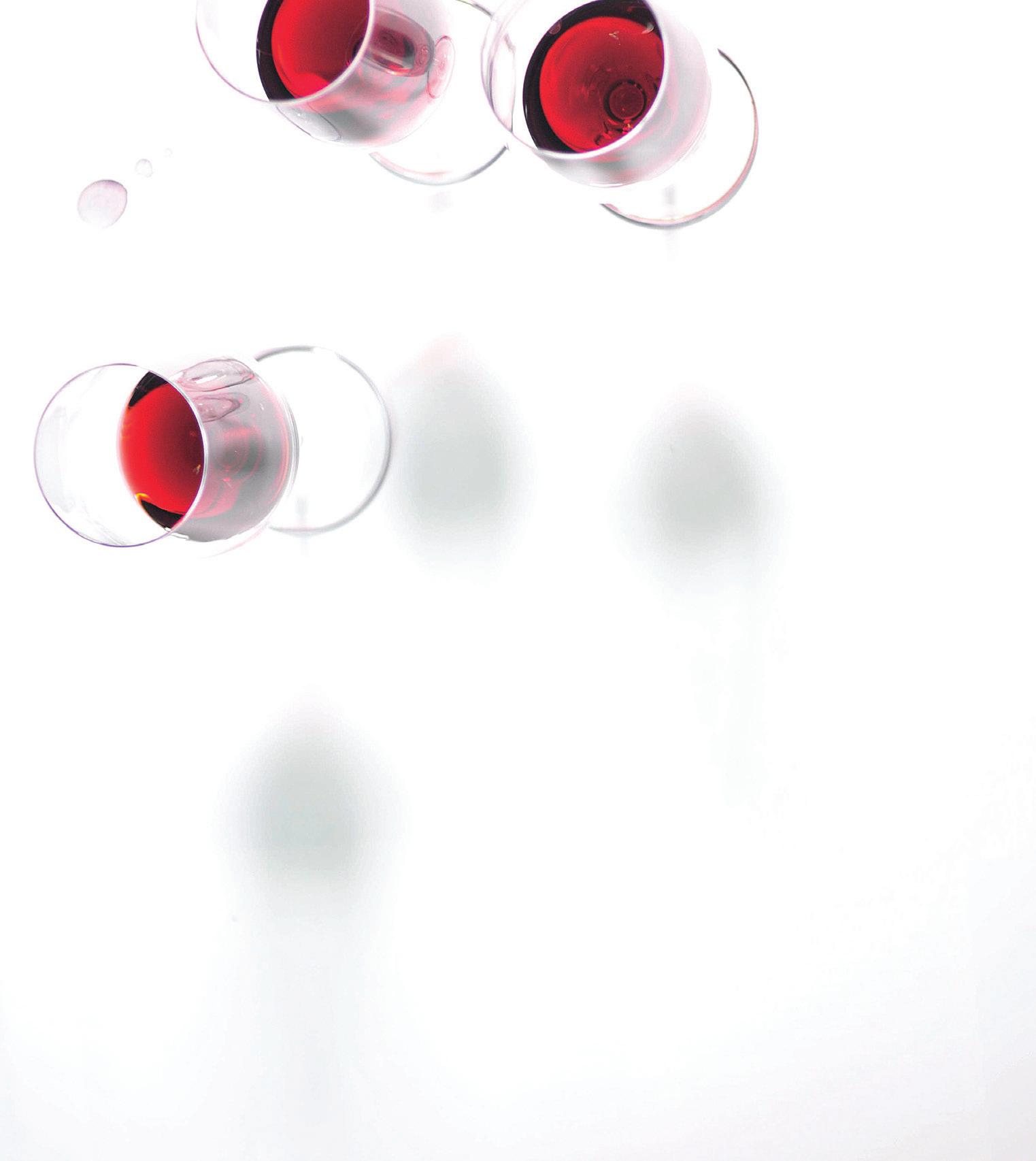
ORIGIN: Maule, Central Valley, Chile
THE WALLET: *$15-18
ALCOHOL: 14% abv
TASTE: Stainless ferment and higher altitude vineyards help keep this dusky Cab fresh. 100+ year old vineyards give it intensity: menthol, cassis, medicinal cherry and minty thistle coat sticky tannins, and finish with smoke singed blackberry.
Villa Teresa Prosecco Vino Frizzante NV Italy $12.00-14.00
A half bottle of fizz is perfect for two people and what better way to start an evening! This elegant, simple Prosecco made with organic grapes is delicious. As pleasing to the eye as it is on the palate, with a lovely fine mousse and citrus, apple flavours. Very light, very tasty with a hint of sweetness on the finish! Great Value.
Venturi-Schulze Brut Naturel 2009 Vancouver Island $20.00-22.00
On the island one does not have to travel far to find a source of high quality fizz. This charming little bubble from Cobble Hill is soft and dry with a core of vibrant fruit flavours and a mousse that just keeps going and going. Hand made by three locals who have come to know a thing or two about crafting something lovely from the best that nature has to offer.
Blue Mountain Pinot Gris 2011 Okanagan Valley $14.00-16.00





Partially barrel fermented and aged sur-lie for six months, this excellent Pinot Gris is worth seeking out. Full-bodied and firmly structured with concentrated citrus, pear and spice flavours. Balanced and powerful, this Okanagan Pinot Gris is a knockout. Kim Crawford Marlborough Sauvignon Blanc 2012 New Zealand $13.0014.50
If you are a diehard fan of Kiwi Sauvignon Blanc, then look no further, Kim Crawford wrote the book on this wildly popular style. Big, bold and bursting with ripe mango, gooseberry and passion fruit aromas that expand through the palate picking up citrus and herbal notes as it opens up. Nicely balanced with good length and a clean fresh finish.
Perrin La Vieille Ferme Luberon Blanc 2012 France $8.50-9.50
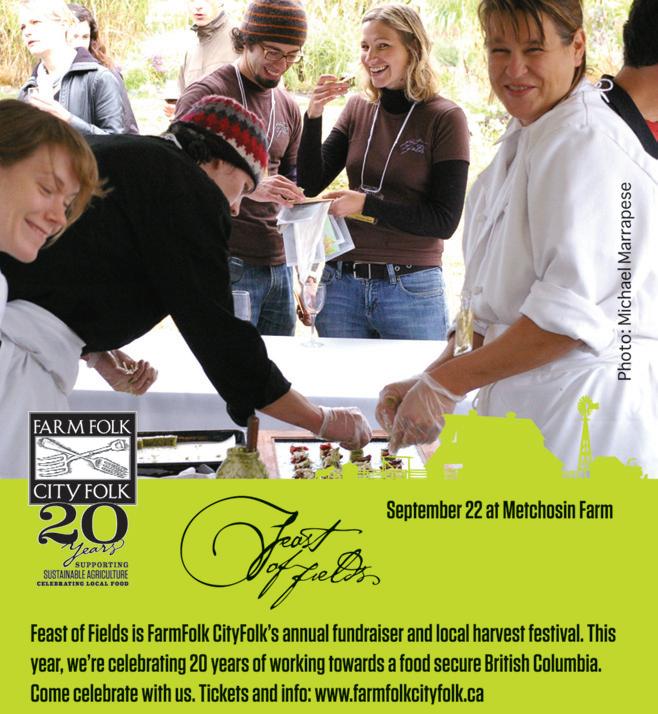
Here is a little piece of wine wisdom gleaned from decades of eating and drinking far too much: “it is tougher than you think to successfully pair dry white wine with Mediterranean cuisine.” Garlic, olive oil, tomatoes and the herbal onslaught of those southern climes are the kiss of death to such mainstream favourites as Chardonnay, Sauvignon Blanc or frisky little Rieslings. One solution is this fecund little blend of Grenache Blanc, Bourboulenc, Ugni Blanc and Rousanne. Strange grapes to us children of the north but these unknown varieties are right at home with anything the Mediterranean diet can throw at them. More winey than fruity but sniff again and you will soon pick up the heady aromas of wildflowers, baked earth and honey. There is richness on the palate with subtle fruit flavours and perhaps a hint of anise through the finish. This Luberon is tasty, surprisingly fresh and works well with the powerful flavours of the sun-scorched Mediterranean.
Drouhin Rully Blanc 2010 France $14.00-15.50





While other Chardonnays dazzle and beguile with power and oak, Drouhin’s Rully is all about elegance and finesse. Yes it is true this wine has had an intimate relationship with the inside of a new barrel, but the oak is soft and muted, playing a supporting role in the background, upfront there is a delicate floral perfume with citrus and spicy mineral undertones and perhaps just a hint of vanilla bean. Crisp and focused with a rich creamy texture, subtle fruit flavours and a dry clean finish. A great price for a solid white Burgundy.
Chapoutier Belleruche Cotes du Rhone Rouge 2010 France $13.00-14.00
This hearty red is a blend of Grenache, Syrah and Mourvedre. Ripe and full-bodied with red currant, plum and spice flavours, supple tannins and a soft fruit filled finish. Lip smacking good.
Chateau La Gorce Medoc 2009 France $14.50-16.00
Who says Bordeaux has to be expensive. Just about everybody, you say? Well give this little claret a try, and you may find yourself pleasantly surprised. Very much made in the modern style with layers of ripe juicy fruit nicely balanced with a rasp of fine tannins.
Domaine Drouhin Willamette Pinot Noir 2010 Oregon $20.00-23.00
This elegant pinot was a very refreshing surprise. Red cherry, raspberry and spice flavours, a lovely silky texture and soft round tannins that fade through the finish. Fairly firm with a good acidity, but the fruit carries it well.
Villa Antinori Toscana 2009 Italy $16.00-17.50
There’s a lot going on here, with pronounced red cherry, spice and dusty earth aromas. Medium-bodied, with soft fruit flavours, fresh acidity and a patina of fine-grained tannins.







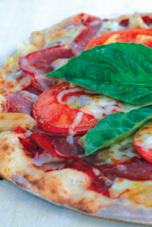
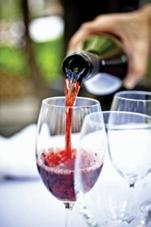




Anticipation has been building as the release of the 2010 Bordeaux vintage approaches(September 28 at BC Liquor Stores). British writer and master of wine Jancis Robinson candidly calls 2010 “dangerously good,” while notorious American wine critic Robert Parker describes it as “prodigious.” H e cites it in the top three greatest Bordeaux vintages of his illustrious career. These are exciting accolades for Bordeaux lovers wishing to stock up their cellars. But can your bank account handle it? The very top châteaux will sell for four figures. Prices for Bordeaux are universally proclaimed absurd and they continue increasing. Apparently, someone is buying!
We are waiting for the bubble to bu rst, but there is no sign of this happening. While we can’t afford the region’s most famous châteaux, it doesn’t mean we’ve stopped drinking Bordeaux. We actually enjoy ferreting out Bordeaux’s value wines (yes, they exist!) and sometimes stray beyond the region in search of inexpensive look-alikes.



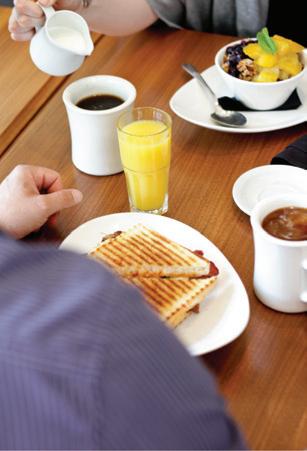
The upside to outstanding vintages like 2010 is that the quality trickles all the way down to Bordeaux’s more humble properties from lesser-known appellations. This is the time to seek out Côtes de Castillon, Blaye, Fronsac or simply Bordeaux or Bordeaux Supérieur. They offer a treasure trove of affordable and satisfying wines. The BC Liquor Board will release 20 wines under $40 from Bordeaux’s so-called “petits châteaux” (see list below). These are the wines you want to get your hands on. Brace yourself ; last year they went fast!
If you are feeling flush, there is no better vintage than 2010 to invest in. Red Bordeaux are blends based on either Cabernet Sauvignon or Merlot with Cabernet Franc, Malbec and Petit Verdot showing up in smaller percentages. The lusher and plump Merlot-driven wines will mature earlier while the more structured and tannic versions dominated by Cabernet Sauvignon have the genes to age for the long haul. (Think Sean Connery!) Patience certainly rewards those who can wait. With time, they develop unparalleled layers of complexity, giving a memorable experience. We’ve been fortunate over the years to taste aged Bordeaux from top châteaux thanks to generous collectors willing to share these incredible wines. Most of these folks don’t buy Bordeaux anymore, as prices have soared too high for them. Forty years ago, they could get their hands on first growths for $20 a bottle. Last year, first growth 2009 Château Margaux was released in BC for $1,800. We were privileged to get a taste and it was indeed perfection! At that price it should be. If we were paying for it, that oneounce sip would have cost $70. Gulp!



Outside the greater Bordeaux region, obscure French appellations offer wine in the model of Bordeaux at a much lower price. Many are great options if we could only find more in our local stores. Intrigued? Look out for the appellations of Bergerac, Pécharmant and Gaillac. We make a point of guzzling plenty of them when we travel to France and Québec. They are fantastic partners with foie de veau (calf liver), rognons (kidney), steak and frites and cassoulet. Besides France, there are plenty of other options to quench the thirsty Bordeaux lover. Countries like Chile and Australia as well as California craft delicious look-alikes at affordable prices.
Chile’s wine industry is heavily influenced by France. In 1883, a Chilean businessman with a great fondness for Bordeaux brought back grapevine cuttings that formed the country’s early plantings. Pioneering producers also hired French winemakers to create wines in the style of Bordeaux. Chile’s early recognition as a quality-producing region was based on the success of its Cabernet Sauvignon and Merlot. Ideal sunny warm weather results in full-bodied wine with ripe and rich flavours and immediate charm. Inexpensive labour and land costs as well as economies of scale mean that bigger companies can produce wines at a very appealing price point. And the best part? They can age! We’ve had several experiences with 20- to 30-year-old wines that still tasted fresh and vibrant. Cousino Macul in particular makes a point of cellaring a
We grow, harvest and prepare... you experience it.
portion of their wines for many years to demonstrate just how age-worthy they are. In Australia, Bordeaux doppelgangers are generally Cabernet-based. Specific regions to look out for are Coonawarra and Margaret River. The former is more obviously Australian, with overt eucalyptus notes being its signature. Coonawarra is capable of producing highly concentrated, age-worthy wines with a ton of blackcurrant fruit. The wines of Margaret River in Western Australia tend to be a bit more Bordeaux-like in character: restrained and elegant with an aromatic lift. Margaret River enjoys a similar maritime climate to Bordeaux, and the most successful Cabernets are grown on gravelly soil that recall Bordeaux’s Grave region. Wynns (Coonawarra), Vasse Felix (Margaret River) and Penfolds Bin 407 (South Australia) can certainly satisfy a Bordeaux craving.
Bordeaux’s most common comparison is with California, and numerous tastings have pitted the two regions against each other. Again, Cabernet Sauvignon tends to dominate but is helped out by a healthy dollop of Merlot and other Bordeaux varieties. The wines are more generous and giving in their youth than their French cousi ns. Don’t let the softer tannin [tannins?]] fool you though; these wines are still cellarworthy. California, particularly Napa, isn’t necessarily synonymous with value, but reasonably priced wines can be found. American négociant Cameron Hughes, for example, has a very interesting business model. He sources “anonymous” small lots of exceptional wines all over the world. His Cabernets and Merlots from California sell for $25-35 on our local liquor store shelves.
As the days become crisper, we turn to heartier fare and fuller-bodied wines. It is the perfect time to explore the world of Bordeaux and its alternatives. Don’t stop with our recommendations. Add New Zealand’s region of Hawke’s Bay, Argentina and the Tuscan coast to your list. Happy discoveries!

2009 Famiglia Bianchi, Cabernet Sauvignon, San Rafael, Mendoza, Argentina $20-23 (SKU #190256)
Full bodied with savoury cassis, green peppers, leather and cherries. Delicious with steak and chimichurri sauce.
2007 Casa Lapostolle, Cuvée Alexandre, Merlot, Apalta Vineyard, Colchagua, Chile $28-32 (SKU #459206)

Ripe red plum and exotic Asian spice with notes of vanilla and sweet herbs. Polished, silky tannins. Enjoy with a slowly simmere d meat stew.

2009 Hollick ‘Tannery Block’ Cabernet Sauvignon Merlot, Coonawarra, Australia $2528 (SKU #67801)









Blackberry, chocolate and toast are lifted by Coonawarra’s telltale eucalyptus notes. Ready made for leg of lamb with mint chutney.
2009 Xanadu, Cabernet Sauvignon, Margaret River, Australia $25-28 (SKU #76141)
Plush fruit fills out the solid frame. Cedary notes give complexity to the dark fruit. Lovely texture here!

2009 Cameron Hughes, Lot 285 Cabernet Sauvignon, Rutherford, Napa Valley, California $35-39 (SKU #210880)













Black cherries, plum, coffee and mint. Richness countered by dusty tannin. Serve with Sunday roast beef dinner.
2008 Schug, Cabernet Sauvignon, Sonoma Valley, California $40-45*
Earthy nose that hints at Bordeaux but riper blackcurrant and sweet tobacco. Elegant, crunchy and p leasingly not over-oaked. A surprisingly great partner with duck.
2008 Château d’Argadens, Bordeaux Supérieur AOC $23-26 (SKU #272724)
Our go-to affordable Bordeaux year round and vintage to vintage. Medium weight but firm tannin means meat is necessary.





2001 Château Lanessan, Pessac-Léognan AOC France $43-48

This 12-year-old Bordeaux is still going strong and a great example of older Bordeaux at a fantastic price. Developed flavours of leather, tobacco, cassis and mushroom. Treat yourself to veal in a mushroom sauce.

DRINKING Guide: How to use our purchasing information.


*Asterisks denote wines that are only available at the winery or select private liquor stores. Some may be in limited quantities. All other wines are available through BC Liquor Stores. Prices may vary.










ECLECTIC WINES CHOSEN EXCLUSIVELY FOR YOU!
Sid Cross (SC)
Food & Wine Judge, Expert
Sid Cross is the Honorary President globally for The International Wine & Food Society with vast knowledge and experience at matching food and wine. He posts interesting wine and food items on their site (blog.iwfs.org) every Monday. Sid judges many wine and food competitions including the Gold Medal Plates (Victoria, Nov. 7, 2013).
Alishan Driediger (AD)
Winemaker, Little Farm Winery
A cooking and language course as a 22-year old in the South of France set it all in motion for Alishan. Her interest in wine lead Alishan to study winemaking and Agricultural Sciences, and work in wine retail in Vancouver and in wineries in the Okanagan. She is currently studying winemaking through UC Davis. Moving to a farm in the Similkameen Valley and growing Riesling and Chardonnay allows her to get her hands dirty and make her own wine!
Jason Yamasaki (JY)
Sommelier, Assistant Manager, Chambar Restaurant
Vancouver-born Jason Yamasaki began his hospitality career in high school at the proud BC institution of White Spot Restaurants. What began as an unassuming career placement program exploded into an unquenchable obsession with food, wine and hospitality. His naturally studious nature attracted him to a Bachelor's Degree of Hospitality Management and professional accreditation though the International Sommelier Guild as well as the Wine & Spirit Education Trust. Jason is currently the sommelier and assistant manager at Chambar Restaurant.
Pan-seared duck breast with red wine & quince sauce (red wine reduction, garlic, thyme, shallots, balsamic vinegar, membrillo)
SC. Two important factors always to consider is the weight of the food and the elements of the sauce. In this prep the red wine in the sauce is a factor (whether a light Beaujolais to a sweeter Port style) as is the membrillo - a light jelly or a sweeter quince candy. Still the duck should be flavourful, juicy and slightly gamey. Pinot noir will meet the key requirement of balanced fruit weight and acidity, allowing you to enjoy the unique flavours of the duck and the sauce but have your palate refreshed by the wine’s complementing acidity. Some New World pinots may be too sweet but cooler climate earthiness from BC, Oregon, Burgu ndy, Mornington Peninsula Australia, or Tasmania should all work well. Other possibilities with better acidity include Bordeaux, Barbera, or Rosso di Montalcino.
AD. Love duck and love the classic, crave-able comfort-foody flavours here so I had to try to make this one (and the other recipe) last night. I thought the richness and crispy fatty
Aged duck breast roasted on the bone with garlic, miso & lemon verbena, with fermented walnut and creamed farro
SC. This should be a sweeter and richer dish, particularly with the creamed farro – often accompanied by duck confit and mushrooms. Miso can vary a lot but fermented soy is often salty and the fermented walnut and lemon verbena will affect your perception of the wine’s acidity. A bigger, fuller Pinot noir would still be my first choice but you need acidity. It also would support aged Nebbiolo from Barbaresco or Barolo. Burgundy again, but BC, Central Otago, Chilean Casablanca or even top California should be welcome. A savoury Sangiovese or Tempranillo will be beautiful mates but be careful that if your choice is at the lowest price level of Chianti or Rioja it might be too light and acidic for this dish. Northern Rhone Syrah would be a nice treat with subtle black pepper to balance the salt. However, always be careful that the wine chosen for duck is not too big, jammy or alcoholic or you will lose the complex flavours of this delicious bird.
AD. I'm reading these in gredients and thinking earthy flavours and umami. I'd like to try a wine with a bit of its own earthiness and some meatiness. Also thinking that you'd want to watch the acid and tannin levels in the wine so you don't
goodness of the duck as well as the rich and concentrated flavo urs of the quince sauce were begging for the juicy refreshingness of Gamay. I'd recommend a wine with a bit of gaminess, earthiness and tart red fruit like a Cru Beaujolais. Another tasty option would be a Similkameen or Okanagan Gamay with juicy meatiness and lots of dark brambly berries. JY. Duck - what a luxurious meat. I'm pressed to think of another protein that drips with such immediate decadence. I am looking for a red wine featuring beautifully radiant fruit with kinetic and edgy acidity to slice through the richness of both the duck and the sauce; one with a ripe core of fruit to meet the waves of meltaway meat and highlight the detailed nuances of the sauce. These layers should pop - and that's why I'm throwing a sparkling red wine on the table for this dish: Lambrusco. Not a sweet, swathy, weedy Lambrusco; I'm craving a drier Lambrusco with tensile red and dark fruit expression and a texture of quivering effervescence to quench and refresh between bites. There are some incredible families (seek out Rinaldini) from Italy's Emilia-Romagna region taking this style very seriously and it’s an absolute delight to savour the charm of a slightly chilled sparkling red wine at the table.
get a nasty reaction with the umami flavours in the miso and end up with a sad and bitter bottle. Rioja is pretty delicious and could fit the bill with its medium acid and tannin levels and meaty flavours, spice and leather, berries and dried fruits - maybe a Reserva so there is a bit of age on it and some softer developed flavours. Another interesting thing to try would be a richer white wine like a Chardonnay or Viognier with lots of lees contact, giving it its own yeasty umami-ness!
JY. This dish deserves a wine that is profoundly singular and original. And for that, let's visit the Jur a, France's smallest wine region and one that showcases very idiosyncratic styles with totally unique profiles. I'm thinking white for this dish and that would mean that we're sipping either Chardonnay, Savagnin or a blend of both. The whites from this region tend toward a streak of nutty and savoury, sherry-like characteristics that are absolutely gastronomic. This quality in wine is critical when we' re trying to match such magically complex ingredients like miso and fermented items. Don't forget the further earthy intensity from the aging on the duck breastmmm delicious decay. The walnut and creamed farro provides the platform for the entire experience and that's such a natural and graceful nod to the broad and extravagant texture of Chardonnay. If you have a penchant for adventurous flavours, the mysterious wines of the Jura should be the next stop on your wine route.
The Beer: Gregorius Trappistenbier (Austria)
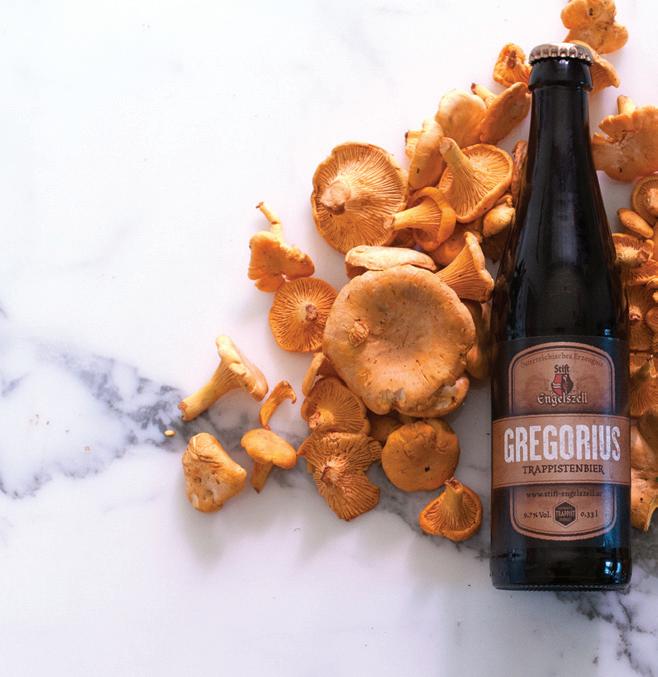
Stift Engelszell is the only recognized monastery in Austria allowed to produce authentic Trappist beer. Dark, strong and sweet, this Belgian-style beer is a good transition from the heat of summer to the cooler weather. Flavours of roasted malts, caramel and dried plum go down slightly spicy and finish with a touch of bitterness.
ABV 9.7% stift-engelszell.at
The Bite: Chicken Pot Pie with Chanterelles
Nothing says fall quite like wild mushrooms and chanterelles are the easiest wild fungi to find in grocery stores. This dish is warming, comforting, and easy to prepare. Look up any pot pie recipe and substitute chanterelles for regular mushrooms.
The Conclusion:
The malt in this tripel worked well with the apricot-like mushrooms and the high alcohol was able to stand up to the richness of the sauce. Bring on the colder nights.
savour the experience...
join us for the festival, for further information visit
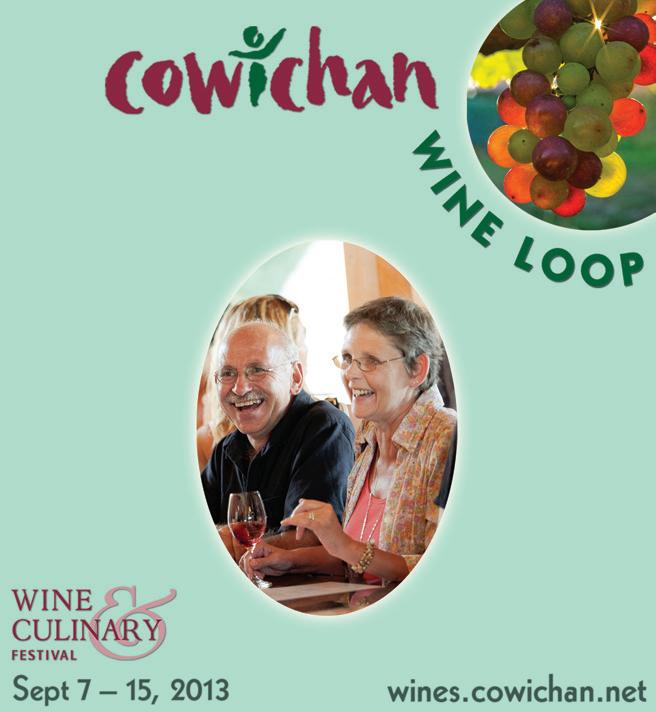
Visit our website or check us out on facebook, twitter and Instagram. More stories, more reviews. www.eatmagazine.ca #eatmagazine
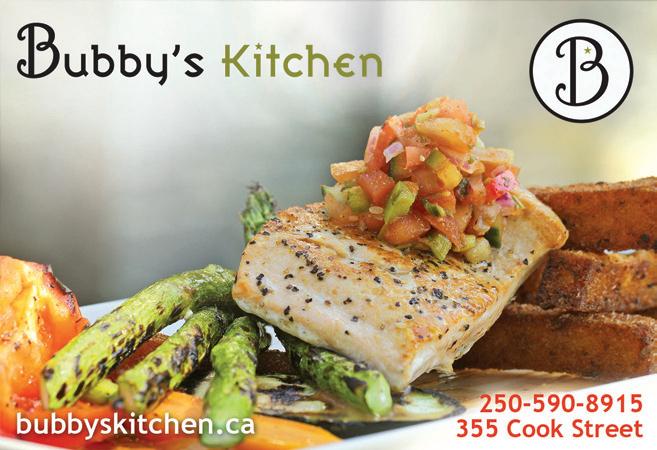

VICTORIA: It was the summer of the food truck, wasn’t it? More specifically, the taco truck, am I right?
Tofino-based Tacofino added a blue truck to their fleet and rolled into Victoria, usually to be found at 1618 Store Street. (tacofino.com) The Taco Justice truck which launched on the corner of Cook and Pandora last fall quickly gained a cult following, being filmed for an episode of Food Network’s Eat St. at the end of August. (tacojustice.com) And Norte Street Food, tucked into a little nook next to Aubergine on Gladstone is not technically a food truck, but gives off that vibe, serving up street food from the pueblos of Northern Mexico. (nortestreetfood.com) If you haven’t conducted your own taco tasting yet it’s not too late – the trucks should be around for a while yet before going into winte r hibernation. (If you’re looking for the most reliable way to track their movements I would recommend following them on twitter.)
I know I’ve been getting you excited about this for a while but it looks like, at long last, the permanent Victoria Public Market is set to open its doors. The opening weekend is slated for September 14-15, with VIP speeches beginning at 10am on the 14th, followed by ribbon cutting at 11am, both on the back carriageway. There will be a farmers market and live music on the carriageway from 11-3pm and cooking demonstrations and musicians inside the market from 11-6pm. Kids entertainment will include free facepainting (11-2pm) and balloon twisting (12-2pm), and food and garden focused activities by Lifecycles and Compost Ed Centre. Confirmed permanent vendors within the market include Silk Road Tea, Salt Spring Island Cheese, LaCocina de Mama Oli, Island Spice Trade, Roast, Victoria Pie Co, Cowichan Bay Seafood, Sutra, Damned Fine Cakes and Gelato Lab. The French Oven will be the onsite bakery and Ingredients will be opening their second location at the market, becoming the permanent greengrocer. Also taking place on Sept 14th is an all-star chef line-up for demonstrations at the community kitchen beginning with Peter Zambri (Zambri’s) from 11-11.30am, Bill Jones (Deerholme Farm) from 12-12.30pm, Vikram Vij (Vij’s) from 1 -1.30 pm, Heidi Fink (Chef Heidi Fink Cooking Classes) from 2 – 2.30pm, Dan Hudson (Hudson’s on First) from 3 -3.30pm, Marissa Goodwin (Organic Fair) from 4 – 4.30 pm) and Don Genova (CBC’s Pacific Palate). victoriapublicmarket.com
If you can’t get enough of the chef demos, the Moss Street Market’s ‘Chef’s Stage’, which launched earlier this summer, also has a great fall line-up with guest chefs such as Steve Walker-Duncan (Flavours of the West Coast) on Sept 7th, Brad Holmes (Ulla) on Oct 5th, and David Mincey (Preservation Chocolate Foods) on Oct 12th. mossstreetmarket.com
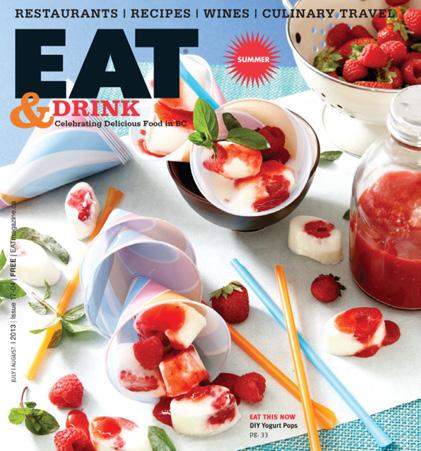
Not far from the market, a new mecca for Fairfield baked-good fans – Cottage Bakery and Café opened at 1267 Fairfield Road at the end of June, serving up treats such as chocolate éclairs, strawberry cream puffs, cheesecake by the slice and gluten free brownies, as well as daily selections of muffins and breads. facebook.com/CottageBakeryCafeVictoria
Due to open in early September is the Interactivity Board Game Café at 723 Yates St. – the first spot in the city where you’ll be able to grab a bite and play one of 500 games from their library (ibgcafe.com). We were awaiting news of what may be Victoria’s most highly anticipated restaurant/bar opening when word came in via fb that.
Shawn Soole’s Little Jumbo has been whetting our appetite all summer, leaking little tidbits to the public about their hydroponic unit – one of the first of its kind installed in Canada - that will ensure that the
mint in your mojito is still alive when it gets to your table. The good news is they are now open, so you can head down the hall at 506 Fort St. and experience the Scottish ice and living herbs for yourselves. If you were a regular at Clive's you may recognize a few other faces - Nate Caudle is behind the bar and Justin Hardiman is at the helm in the kitchen. (facebook.com/LittleJumboYYJ) —Rebecca
BaugnietHave you recently received exceptional service? Recognize that individual by nominating them for a Victoria Hospitality Award at victoriahospitalityawards.com
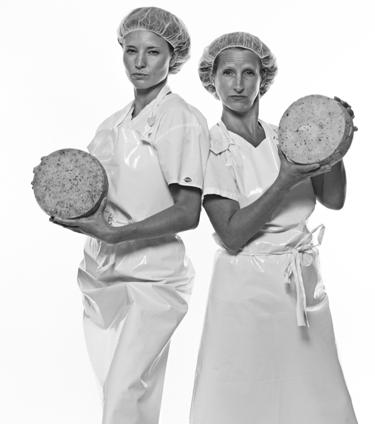
COWICHAN VALLEY: Summer may be behind us, but the last warm days of September are still perfect for al fresco dining around the Cowichan Valley If you didn’t get a chance to check out two of the area’s newest restaurants over the summer, now is the time. Bridgeman’s Bistro in Mill Bay offers a gorgeous ocean view patio and a “bridge themed” menu with local seafood, casual west coast fare, and a great selection of beer and wine (778-356-3568; bridgemans.ca). In Maple Bay, the newly opened Bad Habits Café offers breakfast, lunch, and pastries with a great patio overlooking the bay (250-597-8089).
Fall is the best time of the year for Cowichan Valley’s food and wine aficionados. September means it’s time to shake off the post-summer blues with the annual Cowichan Wine and Culinary Festival, Sept. 7-15th. This weeklong celebration of the Cowichan Valley’s finest food and wine includes many feature winemakers dinners and tasting events around the valley, as well as a kick off grape stomping competition at the Cowichan Exhibition grounds. Check online for complete festival event listings, tickets, and grape stomping registration (wines.cowichan.net). Later in the month Metchosin Farm will be hosting the 16th Annual Vancouver Island Feast of Fields event, Sunday September 20th. This harvest festival celebrates local food and agriculture, with participating chefs, vintners, and farmers from all over Vancouver Island (farmfolkcityfolk.ca/events/feast-of-fields/vancouver-island-feast-of-fields).
Few things are so quintessentially Fall as a visit to an apple orchard or a pumpkin patch. Get your fill of autumn’s apple bounty by visiting Merridale Estate Cidery and tasting their award winning ciders and liqueurs before dining at their Orchard Bistro (250) 743-4293; merridalecider.com). Alternatively, the Sept 29th Salt Spring Island Apple Festival celebrates Salt Spring’s 350 varieties of organically grown apples as well as other locally produced delicacies (salt springapplefestival.org). In October, consider a visit to Abby Lane Farm, where you can take a wagon ride through their u-pick pumpkin patch, as well as purchasing a range of specialty and sugar pumpkins for Thanksgiving (250-709-5405; abbylanefarm.com).
Speaking of Thanksgiving, make sure to pre-order your local organic Turkey to avoid disappointment this October. Buying a hormone and antibiotic free bird from one of the Valley’s many poultry farmers allows you to support local agriculture, while serving the healthiest turkey possible to your family. Places to contact include: Cowichan Valley Farms (cowichan-valley-farms.com; 250-746-5601), SOL Farm (solfarm.ca; 250-737-1879), Terra Nossa Family Farm (terranossa.ca), Quist Farms through Cowichan Valley Meat Market (250-746-8732), Myson Farm (250-929- 7115), and Stonefield Farm (250-7433861). —Lindsay Muir
TOFINO: First off, a nod to SoBo and owners Artie and Lisa Ahier for being named third on a Zagat list of the Top 10 restaurants in Canada rated purely on food. SoBo is listed after Ulla in Victoria and the Pear Tree in Burnaby. And according to Artie, it’s a spring 2014 publishing date for the SoBo cookbook. Stay tuned! sobo.ca
Another local cookbook recently found its way into my hands. Flavours of Tofino is a collection of some 40 local recipes released by Pacific Sands Beach Resort this year to celebrate the resort’s 40th anniversary. There are some of Pacific Sands’ founders the Pettinger family’s favourites, such as Joan’s Famous Bacardi Rum Cake and Grey Cup Casserole, as well as recipes from local chefs and restaurants. The cookbook also tells the story of the resort over its long history. pacificsands.com.
The Wickaninnish Inn has announced that Executive Chef Warren Barr is their new EC and David Sider joins him as Restaurant Chef. Check out the new menu at wickinn.com/pointe-restaurant. Glen Kaleka of the Beach House has added a new component to his business, located in the Live to Surf Complex at 1180 Pacific Rim Hwy. In ad dition to movie and bike rentals, the Juicery is new this summer. Featuring smoothies, juices and snacks, the Juicery is open 9am-6pm daily. Locally sourced wheat grass is available, as are many healthy add-ons to the juices and smoothies. Kaleka says there is no sugar added; they use only agave and maple syrups. With choices like Stoked and Broke, Dawn Patrol, Tuff Love and South Swell, this new option in the busy complex is distinctly Tofitian. beachhousetofino.com
The Tofino Botanical Gardens and Darwin’s Café have a new event started this summer, which is continuing into the fall. Music in the Gardens is nightly event featuring classical music piped through the 12 acres of gardens, waterfront and rainforest. Enjoy a drink and tasty treat from the café as you go or after you wander. It’s an experience not to be missed! tbgf.org
The Tofino Saturday Artisan Market wrapped up Labour Day weekend. This year was especially busy with many new vendors added, says organizer Anne Weeks. Booths that regularly had a line-up were Sarah Platenius’ tamale booth, and Julie Lomenda’s 600 Degree Bakery booth. Thanks to all the vendors for providing locally made goods for visitors and locals alike all summer. See you next year!
—Jen DartNANAIMO & UP ISLAND: September is one of my favorite months of the year; tomatoes and corn are in abundance, the sun still has its warmth, and numerous food festivals approach. Now is also the time to make the most of the fresh produce available at your local market before they close for the season.
On a recent venture to Nanaimo I visited the Bower Rd Market on a beautiful summer afternoon. I spoke to organizer Dirk Becker about his commitment to allow only food product venders. The result; there areapproximately 25 all selling a diverse assortment of meat, baked goods and produce. Located directly
behind Beban Park Rec center it runs Wednesdays from 4-6:30 through October. Bodhi's Bakery with their giant round of pecan sticky buns and lovely apple cider boules, created quite a lineup. Their retail location offering organic coffee along with an assortment of handcrafted baked goods is located at 5299 Rutherford Rd. Nanaimo. 250-585-6015
In November 2012, celebrity chef David Wong opened Jar, the much anticipated breakfast and lunch restaurant at 6595 Applecross Rd. Nanaimo. Unfortunately, he has since closed it to relocate his family to Vancouver. We'll have to see who snaps up that beautiful space for something new in the future.
Coastal Black Estate Winery is once again hosting the highly successful Flavours Gourmet Picnic on September 15 in Black Creek, north of The Comox Valley. The 600 acre estate will be highlighting the taste of the Island with notable chefs from the Atlas Cafe, the Breakwater, and Vista 18 as well as libations from Island Soda Works, Philips Brewery, and Lonetree dry cider. Visit gourmetpicnic.ca and coastalblack.ca for more details.
Gigi's, owned and operated by Angie Cheslzk - formerly a chef at the Leeward Pub & Grill, Comox- has opened in the location previously occupied by The Comox Eatery. Angie is offering a large lunch and dinner menu of healthy ingredients, all for under $10. 250-941-2838

Much loved, Tita's Mexican Restaurant in Courtney has new owners - they have tidied up the lovely patio in the garden and are keeping the legacy alive with most of the same favourites on the menu. Their hours are still 4pm-9. titas.ca
Mark your calendar on September 27 & 28th for Salt Spring Islands' Sip & Savor. This event is not to be missed! Friday night there will be 4 different winemaker’s dinners to choose from. Saturday starts off with a guided tour of the market, followed by wine and appetizers in a local garden, and finishing with a BBQ and barn dance. Get your tickets at sipandsavoursaltspring.com
And finally, also on Salt Spring Island is the annual Harvest Grape Stomp at Salt Spring Island Vineyard. Come for the wine, music, food & laughter as bare feet compete to stomp out the grape juice. Always a barrel of fun. October 19th. saltspringvineyards.com
Kirsten Tyler
VANCOUVER: It’s all about chefs coming into their own…Hamid Salimian has left his EC position at Diva at the Met in order to assume the role of Team Captain for the Canadian Culinary Olympic team. Diva’s (significant) loss is Team Canada’s gain, however, as Salimian has won multiple golds.
Jefferson Alvarez has taken over the range at Secret Location (secretlocation.ca). The European-style tasting lounge features wild game and sustainable proteins, locally sourced ingredients and a killer cocktail list. Stu Irving, formerly of Cobre, and partner John Cooper, have opened Cuchillo (cuchillo.ca)
After years in our kitchen, we are pleased to announce that Warren Barr has ascended into the role of Executive Chef at the Wickaninnish Inn. Restaurant Chef David Sider, an accomplished alumnus of Langdon Hall joins Chef Barr in the Kitchen.or follow us on Twitter Continuity and quality are Chef Barr's priorities. See them brought to life in our new menu:
at 261 Powell St. The pan-Latin menu focuses on the classic taco, as well as various street food-inspired plates and various wild proteins. Add in an award-winning bartender, and it’s just about perfect.
David Gunawan has finally opened the South Granville doors to his first venture as an owner. The Farmer’s Apprentice (farmersapprentice.ca) is a “vegetable-forward” restaurant that also serves some animal protein. Menu changes frequently, with nine to 12 dishes per night.





Josh Wolfe, former EC at Coast and current owner of Fresh Local Wild food truck, has opened Good Wolfe Kitchen & Bar (goodwolfe.ca) in Yaletown at 1043 Mainland Street. The menu focuses on, natch, fresh, local and wild, with inventive twists like salmon “shawarma” and steelhead pastrami.

Sean Heath er of The Irish Heather, Salt Tasting Room, Judas Goat, Rainier Provisions, et al, has, at long last, broken the Gastown borders and opened a satellite Salt in Kitsilano at 2585 West Broadway (salttastingroom.com). In other cross-neighbourhood news, Nook Restaurant (nookrestaurant.ca), famous in the West End for its housemade pastas and authentic hand-stretched pizzas, has opened a second location, this time in Kitsilano, in the old Rossini’s spot at 1525 Yew Street.
And, first-time restaurant owners Steve and Meghan Clarke have opened Tractor (tractorfoods.com) at 1903 West 4 Avenue in Kitsilano and hired Ryan Mah (formerly of Chinois, Goldfish and Joe Fortes) as executive chef. The menu focuses on fresh, healthy options, served cafeteria-style, at extremely affordable prices. Salads start at $3.25, while stews like the Moroccan chicken run $8 each.
Hawksworth Restaurant has announced its inaugural Hawksworth Young Chefs Scholarship competition (hawksworthscholarship.com). The $10,000 bursary, and a stage at a top international restaurant, will be awarded to a rising young Canadian chef by a panel of judges to include Marc McEwan, Jacob Richler, Connie DeSousa, Vikram Vij, and (natch) Daivd Haw ksworth, among others. The 10 finalists will compete on October 27 at Pacific Institute of Culinary Arts




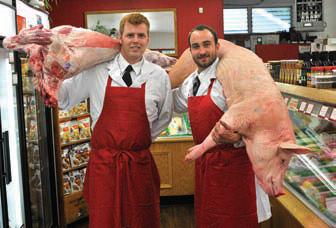

Earnest Ice Cream (earnesticecream.com) owners Ben Ernst and Erica Bernardi have opened their first brick-and-mortar location at 3992 Fraser Street. Look for scoops, affogatos, sandwiches and other fair-trade, sustainable and locally-sourced frozen treats.
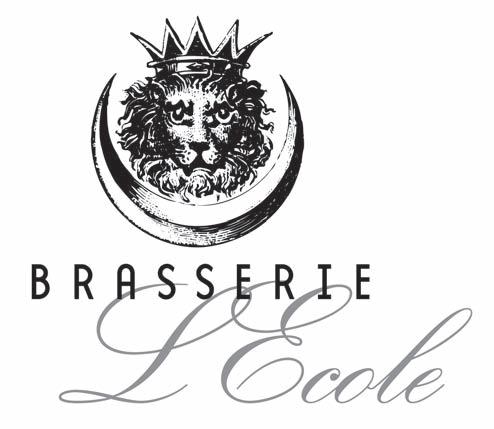
The Fraserhood continues to expand its culinary offerings…The owners of Les Faux Bourgeois down the street have launched Los Cuervos Taqueria & Cantina (loscuervos.ca) in the old Che Baba space at 604 Kingsway. Look for tacos, tostadas, and some seriously good flautas of roasted duck and sweet potato. Prices hover around $3-$5 per plate and a good selection of tequilas round out the offerings.
And just down the street…a new vegan/vegetarian/gluten-free spot swells the ranks with the opening of The Black Lodge (630 Kingsway, no website). This Twin Peaks-themed bar (yup, there’s even a red room) features Philly cheesesteaks, poutine dogs, chilli, all meatless, of course. It’s also fully licensed, with a good selection of craft brews and clever cocktails. —Anya Levykh


Once upon a time, on Old McDonald’s farm, nobody raised an eyebrow over the e-i-e-i-o-s that, naturally, came with the turf.

Flash forward to Vancouver Island in the early 2000s and a few pastoral neighbours have changed their tune—making the freedom to farm (even in BC’s Agricultural Land Reserve) an uphill battle across the province.
In the case of Dragonfly Farm (west of Duncan), years of noise complaints from a neighbour led Dan and Regan Ferguson to a legal battle that resulted in the hallmark decision that, yes, animal noises are natural to basic farming practices. That animals indeed belong on farms in BC, if farmers so choose. But it took eight years and more than $40,000 in legal fees to get there—an ongoing financial burden for the Fergusons that the Island Chef’s Collaborative (ICC) is hoping to offset with its second-ever long table dinner on September 8.
“What happened to the Fergusons is scary; it’s fascinating,” says Ceri Barlow, a board member with ICC. “It really speaks to what’s happening in food production all over the world—farmers are being pushed out because of residential needs, even on land that’s reserved especially for farming. Dragonfly Farm is provincially and municipally zoned as farmland—and the fact that Dan had to defend that, to defend his right to farm, is terrifying.”
This harvest-style dinner—co-hosted with the Cowichan Valley Wine Festival on the Fergusons’ farm—is the second fundraiser from ICC this year (the first, a multi-course seafood excursion, raised $9,000 for the group’s microloan fund). Headed up by chef Brock Windsor from Stone Soup Inn, long table diners can expect a diverse, locallysourced menu featuring both chefs and products from Merridale Cider, Bistro 161, Vinoteca, Amuse on the Vineyard, Deerholme Farm, and Hudson’s on First—plus donated lamb and greens from Dragonfly Farm itself.
Long table dinners are a departure from ICC’s Food Fests of years past, a shift due in part to changing liquor license obligations for festivals and a desire to host multiple thematic events each year. ICC’s board is typically approached by an island farmer or food producer with a business plan for a specific need (equipment, livestock, seeds, etc.). This time, the ICC approached the Fergusons directly, having wanted to pitch in since the precedent-setting decision came down from the Farm Industry Review Board (FIRB) in June 2010. Cont’d top right
“For the ICC, farming is integral to a healthy society—and we think the public needs to know about the kinds of restrictions that are being put on our farmers,” says Barlow. “The wheels aren’t turning with policymakers yet.”
Although FIRB's formal investigation is officially behind them, the Fergusons continue to slowly pay down their legal debt and deal with noise complaints from across the road.
“We wanted to find a way to help other farmers facing similar problems,” says Dan Ferguson, who hopes that the fundraiser will raise awareness about the issue itself and push administrators to seek simpler, more appropriate methods for resolving complaints made to FIRB. “The business of unnecessary dispute resolution hurts small family farms like ours. We’d rather put the energy into farming, to be honest.”
Tickets are $100 and can be purchased at Hotel Rialto, Stone Soup Inn, Spinnakers, Cook Culture, Blue Grouse Winery, Averill Creek Winery or Vignetti Zanatta. For event details, visit www.iccbc.ca; for more on the story of Dragonfly Farm, visit www.eatmagazine.ca

Scott Gurney was scrolling through his Twitter feed one day when a tweet about a traditional barbecue and bourbon festival based in the American Southeast piqued his interest. He started researching hybrids of this type of event and pretty soon an idea was born: Brewery and the Beast, a festival of meat—but with a West Coast spi n. “We took a very specific idea and turned it into a more broad-spectrum true meat festival,” says the event coordinator and creator, “with different styles of cooking and ethnic backgrounds as opposed to one specific genre. Then, of course, pairing it with a craft beer such as Philips was a natural fit. They helped us cultivate the idea and refine it to what it is now.”
The second annual sold-out event takes place in Victoria at Philips Brewery on September 22. The event will see its second year in Vancouver next year, and planning has begun to bring it to Calgary in 2014. As Gurney explains, “We don’t try to re-invent the wheel from city to city, we just try to better manicure it and continually strive to make it a smooth and enjoyable experience for the chefs and guests alike. The only differe nce you will find in regards to size, style and experience will be the chefs who are cooking your food.” The chefs and vendors invited are those showcasing these high-end local meats on their menus, taking part in the sustainable food system and sourcing as locally as possible.
One obvious attraction is the traditional food and drink aspect, but the event also seems to appeals to people because it is unique and like no others being offered in B.C. As Gurney can attest, “The quality of the food is off the charts and the chefs are given the green light to throw down creatively whatever protein they want to cook and however they want to cook it.” Chef and owner Cory Pelan of The Whole Beast Meats in Oak Bay, who will be at this year’s event along with more than 30 local chefs (like Tod Bosence of Veneto Tapa Lounge and Garrett Schack of Vista 18) explains it this way: “A lot of people are unapologetically embracing their carnivorous cravings these days. And why not celebrate it with beer!”
Along with Philips Brewery, Two Rivers Specialty Meats from North Vancouver is an integral part of the event, supplying a significant amount of the free-range, hormone-free and sustainable meats. They support the event because it highlights the many local farmers and their ethical practices as well as for the opportunity to give exposure to diverse cuts of meat and whole animals that you may not find on a regular restaurant menu.
“It’s a very different style of event from what Victoria normally sees,” says Gurney. “The selection is crazy good because you have eight to ten different proteins being featured, from elk, bison, duck, turkey, beef, lamb, pork, chicken and wild boar. You name it and it’s here.” —Sherri Martin
To enter the draw to win two tickets to this year’s Brewery & the Beast email: eatcontest@gmail.com and be sure to include your email address & phone number. Contest closes September 15th, 2013
Brewery and the Beast, September 22, 2013 from 1-4 p.m. at the Philips Brewery “backyard,” 2010 Government St., Victoria. Partial proceeds from this year’s event will go to support the BC Hospitality Foundation.
Sam Benedetto, The Guild

Brussels Sprouts! With a combination of at least one or more of the following: bacon, butter, chanterelles, and garlic. As long as they are well cooked until soft, they are delicious. I buy mine anywhere I can find them, as some years they seem to be scarce.
Fauna Martin, Ca Va
Fall feasts are all about pumpkin pie! My mom’s pumpkin pie! A pretty standard recipe with a beautiful flaky crust - full of lard, and a painstakingly picked pumpkin whose first job is always to scare the little ghosts and goblins on Halloween. This means that our jack-o’-lantern’s are always made up of locally grown, organic pumpkins usually from a small back yard plot on Blenkinsop Rd.
Justin Hardiman, Chef, Little Jumbo

I have an old King apple tree in my back yard that I always look forward to picking and using them up anyway I can. One of my favorite things is apple and bacon stuffing on Thanksgiving.
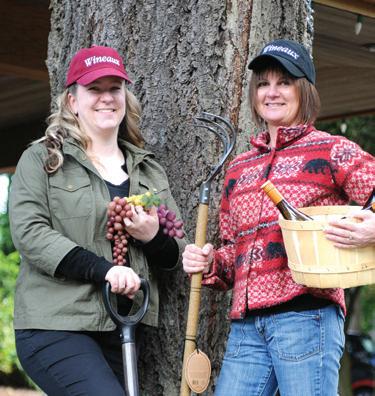


Rob Clarke, Sooke Harbour House

When autumn rolls around there is nothing my family enjoys more than a creamy butternut squash risotto with a crispy skinned porchetta, balsamic glazed beets and a salad of shaved fennel and arugula with a vinaig rette of bronze fennel frond and nasturtium leaf. Sloping Hills farm up island provides beautiful pork and from there I'll stop off at the farmers markets to pick up the ingredients that will inspire the rest of the meal.
Kerry Park, Tre Fantastico
When fall starts to roll in one of my favourite things is slow cooked duck leg confit. We would most likely serve it with French lentils, wild mushrooms, not too mention some Cottlestone honey roasted carrots from Madrona Farm. A blackberry gastrique would brighten up the plate and cut down on some of the richness of the dish.
Natasha Schooten, Terrafina Restaurant, Hester Creek Winery
My favorite fall feast must is butternut squash gnocchi with brown butter and sage. I get the squash and the sage from Harker's Organics, the butter comes from Farmhouse Ch eese Co. in Aggasiz, and the gnocchi is handmade.

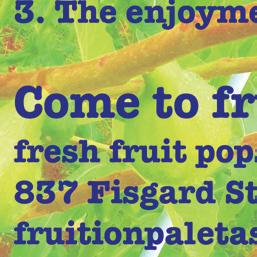
Daryl Pope, The Pacific, Hotel Grand Pacific
My must have fall dish would be 12 hour Braised Pork Belly, Yam Puree, Macadamia Butter & Pan Roasted Atlantic Scallops, Garnished with apple Cider Syrup. I usually go to any local farmer who is selling pork belly and support them. I buy the whole piece as the product is easy to portion and bag to use any other time you like.
Bradford Boisvert, Amuse on the Vineyard
Chanterelles on toast a classic simple yet elegant dish. The flavours just scream fall to me. We are fortunate enough in the Cowichan Valley to go and forage them ourselves, I also work closely with Brother Michael who is a benediction monk with over 30 + years experience foraging wild mushrooms. If you want to learn how to forage them yourself we take tours that include a lunch on select Saturdays in the fall.
Brad Holmes, Ulla
Mushrooms in lots of dishes, of course! We get lots from Mikuni Wild Harvest but also from foraging friends. If it's still warm enough (or you're hardy enough) I love to grill them on the charcoal BBQ, especially porcini & pine mushrooms (umami central!).
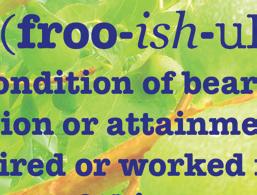
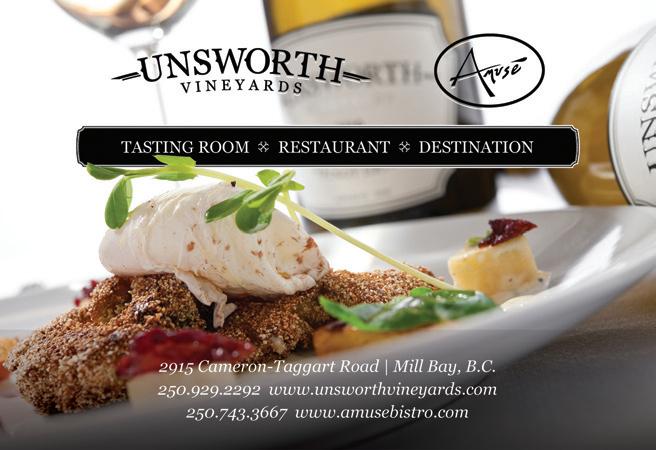



We’re approaching that time of year when the days are getting shorter, the beach visits less frequent, and the reality that summer’s end is near. For those who refuse to let that most enjoyable time of year slip away, however, the best is yet to come. Come September 12 to 15, music enthusiasts will be trekking from as far as Toronto and as near as Fairfield to relish in the carefree atmosphere that only a music festival can bring. Be prepared to put your jobs and worries on hold and trade them in for one small wristband that gives you ultimate freedom to race around this city and listen to your favourite bands. Rifflandia is almost here.
In its fifth year as a highly anticipated musical event, Rifflandia has grown from a mere tent parked outside McPherson Playhouse into a multi-day extravaganza that this year is drawing in the likes of international bands Edward Sharp and the Magnetic Zeros, Big Boi and Death from Above 1979. Although there will be night shows scattered throughout venues in the city, the majority will be held in Royal Athletic Park with its vast field space and family-friendly atmosphere. For those craving a pint or two, options are available. Phillips Brewery will be providing beer gardens with the help of Merridale Cidery and Tinhorn Creek Vineyards. The Rifflandia organizing committee, made up of a humble eight people who depend heavily on help from their volunteers, have worked tirelessly to bring together a cornucopia of artists that will appeal to diverse musical preferences.
A key to ensuring longevity during days filled with music and drinks in the sun (as we’ve all learned the hard way once or twice), is staying nourished. This year, Royal Athletic Park will be colourfully lined with local food trucks offering a wide variety of quality, handmade meals. It’s the first time Rifflandia will have only food trucks that are either an extension of their restaurant (like Prima Strada and The Reef) or trucks that have been designed as a mobile option for fast and deliciously made fresh food. Glenn Barlow, owner of BCWine Guys and Rifflandia’s food and beverage coordinator, explains that with more than three times the amount of trucks wanting to take part in the festival, the committee spends a month jurying which ones will be included. The two most important components in choosing the delectable trucks are ensuring that diverse food options are available and that the businesses cater to the Rifflandia multiple demographics.
For Jonathan Pulker, owner and operator of Refiner Diner, a bio-diesel-run truck that uses refined oil from their own fryers, this will be his second time at Rifflandia, but the first time setting up camp in Royal Athletic. With a resumé that includes working as a red seal chef in many Victorian restaurants and a member of the Island Chefs Collaborative, Pulker realized a few years ago that it was time to start his own business. Over the course of six months, he managed to turn an old truck into the recognized favourite that Refiner Diner is today. His girlfriend Jenessa Lenore has been with him from the beginning, and helpers Richard, Jim, Judah and daughter Rowan have helped to ease the work that comes with increased business. Serving unapologetic diner food with a New Orleans twist, Refiner Diner offers simple yet delicious items such as fried oyster po’boys, falafel (for the vegetarians out there) and their classic and most popular, crispy cheeseburger. With typically four people working alongside each other, the work environment is unique—and tight!—and takes a bit of adjusting to, says Pulker. However, the mobile freedom and quick cleanups are exactly what works for Pulker and his crew.
As Victorians become more conscious about their food and take a keen interest in supporting local food movements, the food truck community is growing stronger. Despite the increase in popularity, however, truck owners remain supportive of one another. A notable example is when Karrie Hill called upon Pulker for advice on how to build her own food truck. Hill, a 20-year professional in the food business, got that advice, along with crucial seed money through crowd-sourcing platform Indiegogo. The result: Deadbeetz, five-weeks-old as of this writing. A snapshot of her food philosophy might peg her as a vegetarian truck, but with popular items such as a striploin steak sandwich with chimi churi and provolone, she caters to a variety of food preferences. Her first outing at the Rock the Shores festival was wildly successful, and Hill’s excitement about sharing at Rifflandia what has grown from pipe dream to reality in a few months, has only increased.
Whether you’ve decided on a day pass or the all-access VIP, this annual festival will bring together music lovers of all types and be a welcome way to end the summer. With stomachs full of freshly prepared and reasonably priced meals and a greater understanding of a new way to dine, these food trucks are redefining what we believe fast food to be.
Rifflandia, September 12-15th, rifflandia.com
